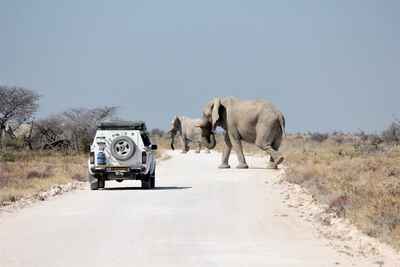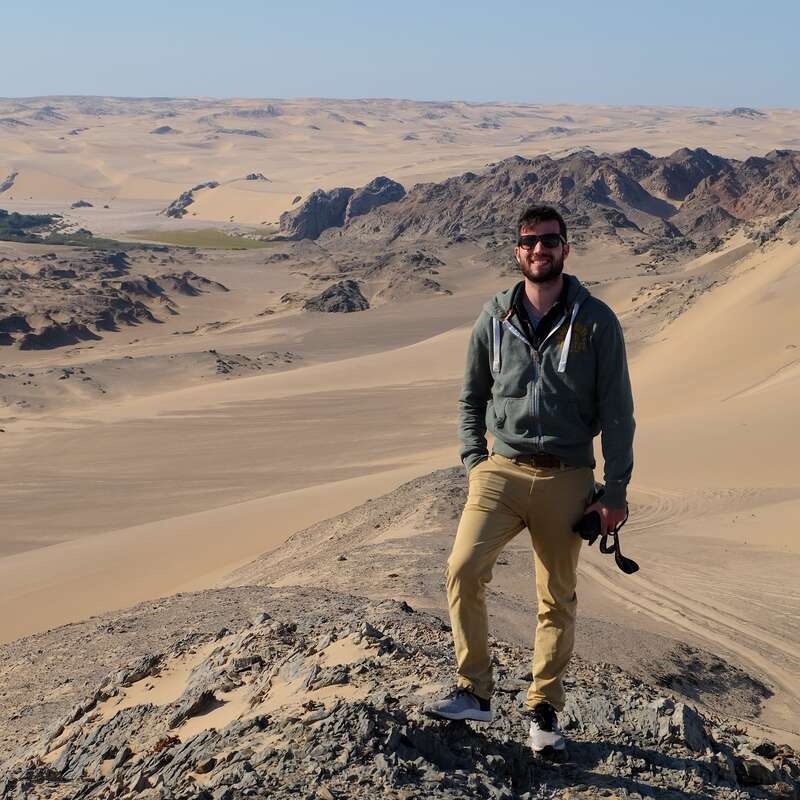About Okaukuejo Camp
For most visitors, Okaukuejo is about just one thing: a wonderful floodlit waterhole that's a magnet for wildlife.
Right in the heart of Etosha, the waterhole is – for humans and animals alike – the focal point of the Okaukuejo Resort. Despite changes over the years, the camp remains true to its roots: a place where visitors can get up close and personal with the park's fabled wildlife.
The rambling range of accommodation remains, too, making it work for solo travellers, couples, families, or groups of friends. It may not be luxury, but it is relatively affordable, with self-catering options for those on a budget, and a small convenience shop on site.
A rather old-fashioned bar makes a good place to start the evening, before dining inside or out at the buffet restaurant (which is open for breakfast and lunch and dinner). Three swimming pools vie for family attention, and a fuel station looks after the basics.
But all this is to Etosha as popcorn is to the cinema: a sideshow to the main event. By day or by night, find a ringside seat by the waterhole, then sit back and watch. Or explore by vehicle – your own wheels or an organised game drive – and discover why Etosha is Namibia's flagship national park.
Our view
As a large, formerly government-run camp, Okaukuejo still has rather a resort-like feel and does not reach the same standards as the smaller, private camps outside the park. However, its excellent waterhole, convenient location and economic rates make it well worth consideration.
Accommodation
102 units
Children
Best for 8+
Open
All year
Activities

4WD Safari

Birdwatching

Night drive

Private activities
Traveller reviews of Okaukuejo Camp
726 real, un-edited reviews from Expert Africa's travellers.
Arrived 3 Apr 2025, 1 nights
"Okaukuejo Camp review"
Overall rating: Average
Arrived 25 Mar 2025, 3 nights
"Okaukuejo Camp review"
Overall rating: Poor
Arrived 1 Nov 2024, 3 nights
"Okaukuejo Camp review"
Overall rating: Excellent
Arrived 18 Oct 2024, 2 nights
"Okaukuejo Camp review"
Overall rating: Excellent
Arrived 30 Sep 2024, 1 nights
"Okaukuejo Camp review"
Overall rating: Average
Arrived 2 Oct 2024, 3 nights
"Okaukuejo Camp review"
Overall rating: Average
Arrived 26 Sep 2024, 4 nights
"Okaukuejo Camp review"
Overall rating: Excellent
Arrived 17 Sep 2024, 2 nights
"Okaukuejo Camp review"
Overall rating: Poor
Arrived 23 Sep 2024, 1 nights
"Okaukuejo Camp review"
Overall rating: Poor
Arrived 14 Sep 2024, 1 nights
"Okaukuejo Camp review"
Overall rating: Good
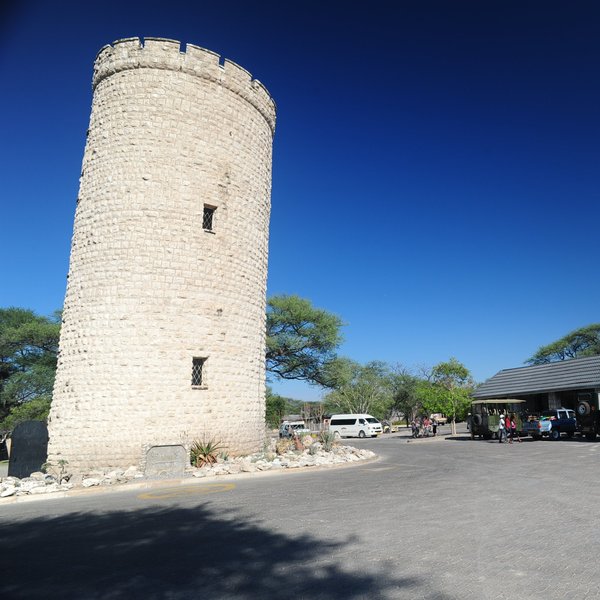






















Expert Africa's gallery
When we travel we take lots of photos ourselves to give you a real and un-edited view of the safaris. See our 28 pictures of Okaukuejo Camp to get the candid view.
View gallerySafaris visiting Okaukuejo Camp
Just ideas, we'll always tailor-make a trip for you
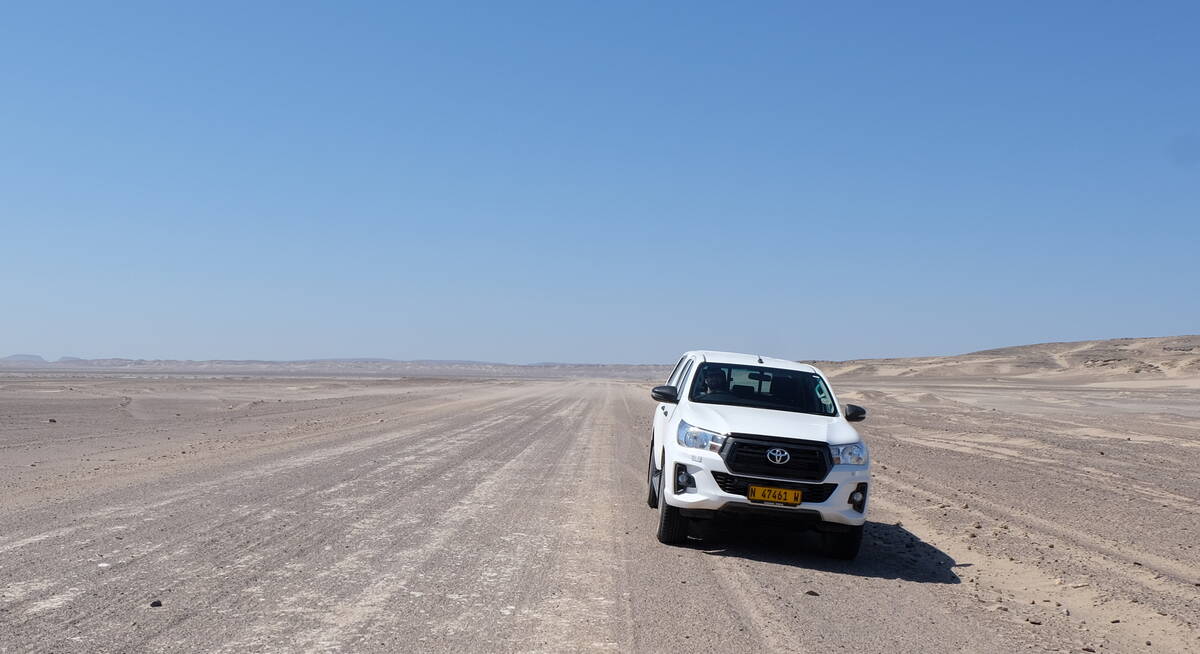
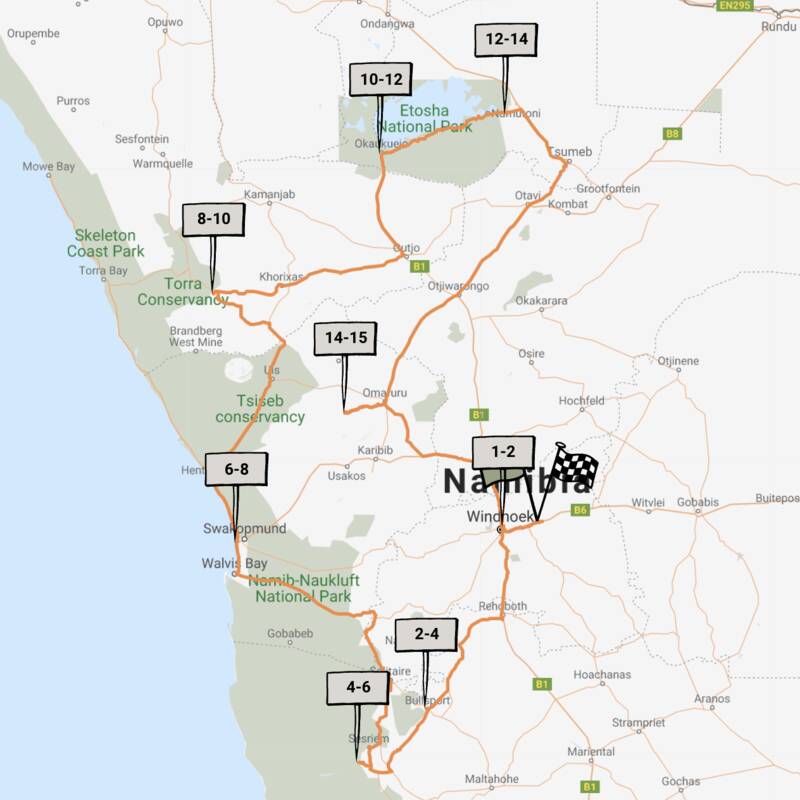
Caracal Self-drive Safari
14 days • 8 locations • 1 country
WINDHOEK AIRPORT TO WINDHOEK AIRPORT
The quintessential Namibian self-drive adventure exploring the highlights from Sossusvlei and the Namib Desert to Damaraland’s wilderness and a safari in Etosha. A great mix of accommodation and excellent value.
Visiting Namib-Naukluft, Damaraland and 4 other areas
US$3,310 - US$4,150 per person
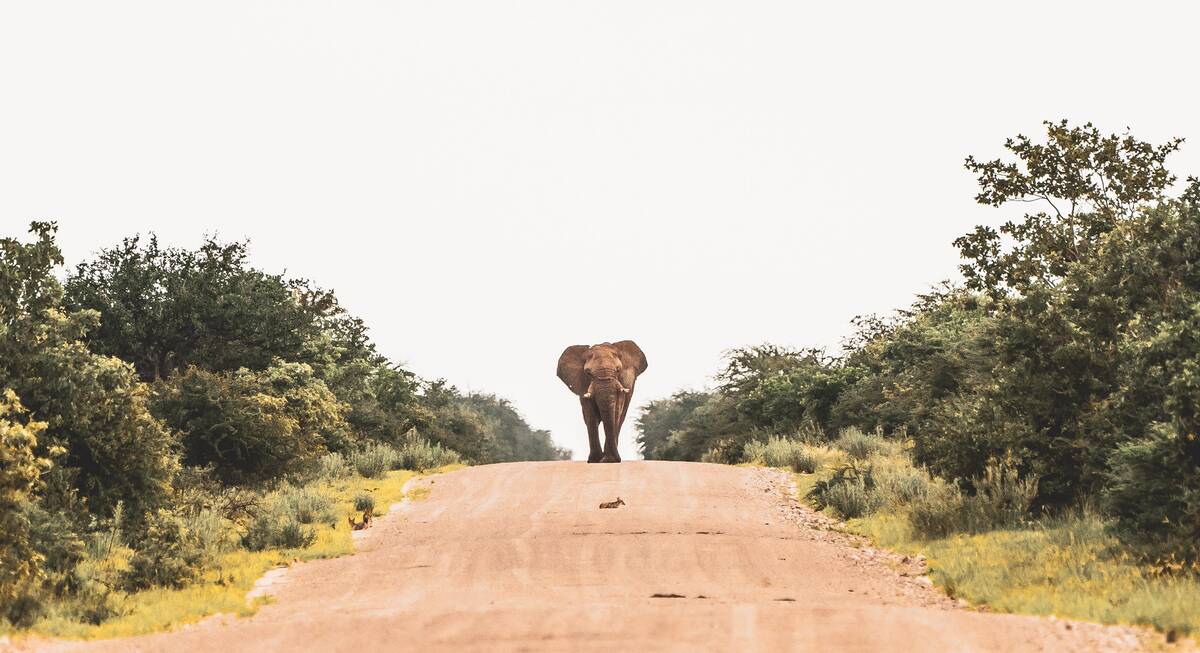
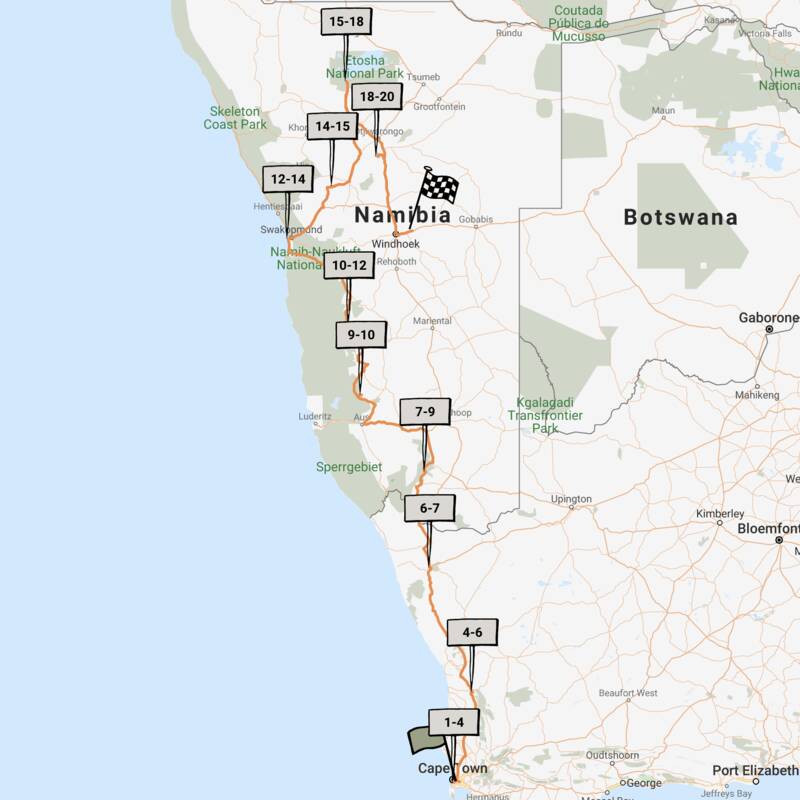
Black Wildebeest Self-drive Safari
19 days • 10 locations • 2 country
CAPE TOWN AIRPORT TO WINDHOEK AIRPORT
Journey from South Africa’s cosmopolitan Cape Town to central Namibia’s Okonjima Nature Reserve during this self-driven safari. The route passes through a stunning variety of landscapes, offering access to this beautiful continent’s rich diversity.
Visiting Okonjima, Namib-Naukluft and 7 other areas
US$4,170 - US$4,280 per person
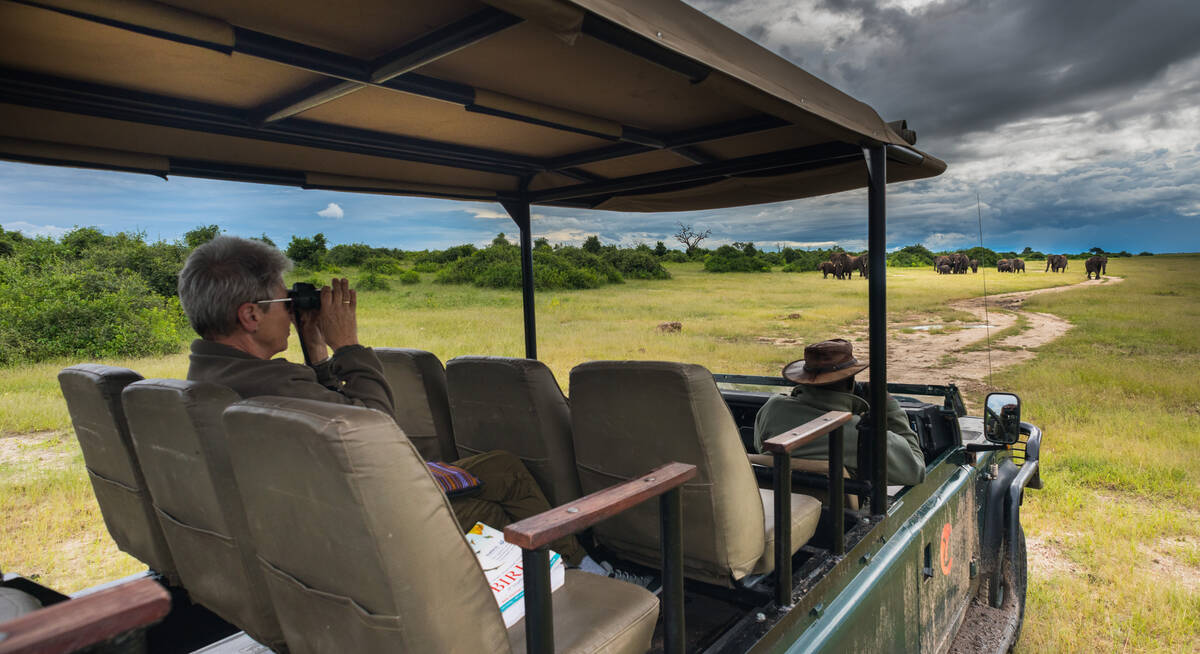
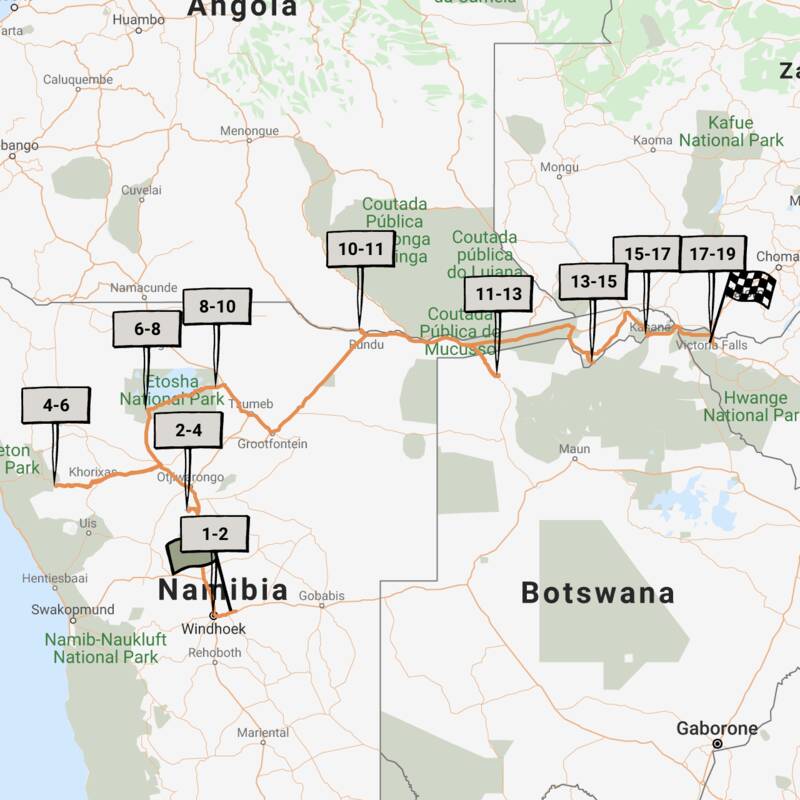
Pygmy Mouse Self-drive Safari
18 days • 10 locations • 3 country
WINDHOEK AIRPORT TO VICTORIA FALLS AIRPORT
A truly epic southern African self-drive safari adventure from Namibia’s mountains and deserts, along the lush Caprivi Strip to Botswana and Victoria Falls in Zimbabwe, staying at luxury lodges throughout.
Visiting Etosha, Victoria Falls and 6 other areas
US$8,730 - US$10,430 per person
Okaukuejo Camp: Our full report
Set in the heart of Etosha National Park, Okaukuejo Resort is a classic restcamp, with a range of accommodation.
With over 100 rooms and a large campsite, it is one of the largest properties we feature. Yet accommodation is not what Okaukuejo is about; travellers stay here for one thing – the wildlife, and particularly the wildlife that visits the superb floodlit waterhole.
Okaukuejo Camp (formerly known as Okakwiju), meaning “a woman who bore a child each year”, stands at the western end of the famous Etosha Pan, about a half-hour drive from the Andersson Gate, the southern entrance into Etosha National Park. Although a larger camp than most we feature, it is a popular choice due to its well-established waterhole, which attracts a variety of game in large numbers, especially in the dry season (June to October).
Okaukuejo officially opened for visitors in 1957, and is the oldest and largest of the three former government-run restcamps in Etosha – the other two being Halali Camp and Namutoni Camp. All three camps are operated by the parastatal Namibia Wildlife Resorts.
Okaukuejo's main attraction is a large, floodlit waterhole, which receives exceedingly regular visits from a wide diversity of wildlife. This includes herds of antelope, lion, family groups of elephant, and black rhino, which are seen remarkably frequently. It's not an overstatement to say that this is probably the best place in Africa to observe black rhino in the wild.
The spectacle starts at dawn and continues throughout the day, with visits from herds of zebras and springbok during the afternoon. It's especially fun to sit back after dinner with a bottle of wine, watching the water's nocturnal visitors and their interactions. On our last visit in May 2022, we were treated to a magical half hour with three black rhino drinking and bathing in the darkness.
That said, the game viewing at Okaukuejo's waterhole can vary dramatically according to the season and the amount of rainfall received. On some previous visits we've arrived following a few months of good rain and much of the wildlife had moved away to take advantage of the lush grasses covering other areas of the park.
Okaukuejo Camp boasts a total of 102 chalets in five different types, which vary according to location, size and facilities. All are equipped with air conditioning, fridge and tea station, and prices are reasonable.
- Five Premier Waterhole chalets are set in close proximity to the waterhole (chalets 34 & 35 afford the best view). On the ground floor, each of the double-storey buildings has an en-suite bedroom with two single beds, and a small lounge area with a tea/coffee station and fridge. Stairs lead to the main bedroom, where a queen-size bed in the middle of the room faces wide glass doors that open out onto a private patio with twin sunloungers. From here, or from the bed, you have partial views of the waterhole and its wildlife activity. Behind the bedroom area are his and hers washbasins, a flush toilet, a shower and a wardrobe.
- 30 double en-suite Waterhole chalets at Okaukuejo are somewhat misnamed, as only numbers 1w, 2w, 9w and 10w have views of the waterhole. These four are considerably smaller than the rest, however, and do not have a private outside space. Conversely, while the other waterhole chalets have no view of the waterhole, they are situated close by and are considerably more spacious, each with its own private veranda.
- Two Family chalets are very spacious with a large living area with plenty of seating space, two en-suite twin bedrooms and a large kitchenette with a stove (with four hotplates and an oven), a microwave, a large fridge, tea station, cutlery, crockery, pots and pans, kitchen knives, and braai (barbecue) utensils – though note that it is not uncommon to find various pieces of equipment (such as cutlery) missing from the kitchenettes. Each of these chalets has a braai area adjacent to a shaded veranda with outdoor tables and chairs.
- 25 Bush chalets have one large double bedroom, a compact bathroom, and a lounge area. These rooms can be made up into triple rooms with a mattress on the floor for children up to 12 years. Outside there are barbecue facilities and a seating area.
- 40 Double rooms, set in two blocks of 20, are simple but comfortable, with armchairs and a coffee table, a tea and coffee station and an en-suite bathroom, but no private outside space. Two of these rooms, set close to the waterhole, offer disabled access, and have spacious double bedrooms with wide doorways suitable for wheelchair access. The toilet and shower have handrails, and the shower also has a pull-down seat.
Three swimming pools include two large pools and a smaller, shallower pool for children. Okaukuejo also has a tourist shop, selling basic food items (although in our experience this is seldom well-stocked), a curio shop, a post office, a fuel station, and a tourist centre, displaying the ongoing park research.
The camp also features a landmark stone tower which is an excellent spot to relax and watch the sun go down behind the distant mountains.
Etosha National Park is well set up for visitors to drive themselves, with a network of very well-marked and signposted roads. The vast majority of guests at Okaukuejo come in their own vehicles and drive themselves around the park. If you plan to self-drive in the park you will need to collect a park entrance permit at the Andersson Gate and then pay for the park fees at the Okaukeujo Tourist Office. Permits are issued in 24-hour blocks, so you'll need to make sure it covers the length of your stay in the park.
Okaukuejo also offers a range of guided activities in the form of morning and afternoon game drives and night drives. A significant advantage of the morning and night drives is that they allow access to the park before/after the gates are closed to the public, when even those staying within the park are not allowed to drive. The morning drives leave around an hour before the park gates open to the public, and the night drive is entirely after the park closes for the day – so you will have the park to yourself. We enjoyed a particularly fruitful night drive on our last visit including a hyena clan having their kill stolen by a large male lion and numerous black rhino sightings. We have had reports that the guiding from Okaukuejo can be rather hit and miss, but on the last couple of activities we’ve taken here, we have been pleasantly surprised by how knowledgeable our guides have been.
Geographics
- Location
- Etosha National Park, Namibia
- Ideal length of stay
- 2-3 nights
- Directions
- Okaukuejo is situated 17km north of Etosha’s Andersson Gate.
- Accessible by
- Self-drive
Food & drink
- Usual board basis
- Bed & Breakfast
- Food quality
- Okaukuejo Camp has a large restaurant, serving breakfast (5.30–9.00am during winter, 6.00–10.00am in summer), lunch (midday–2.00pm), and dinner (6.00–9:00pm in winter, 7.00–10.00pm in summer).
Breakfast is a buffet of cereals, yogurt, breads, cold meats and cheeses, with cooked items including bacon, sausage and beans, and an omelette station where a chef will prepare eggs of your choice. A selection of teas, coffee and fruit juice is also available.
The style of lunch and dinner vary depending on how busy the resort is. On our most recent visit, in May 2022, we didn’t have time for lunch. For dinner we had the choice of a rather limited à la carte menu, incorporating chicken, lamb or beef served with rice or potatoes and boiled vegetables. The dessert options were ice cream or cheesecake. When the camp is busier the à la carte menu is replaced by a buffet.
Regardless of the meal style, we have found that the food here is on the simpler side of things and can often be more than a little reminiscent of school dinners – perhaps unsurprising when you consider the size of the resort. Okaukuejo certainly isn’t somewhere to stay for a high-quality dining experience.
Okaukuejo's Bush chalets have braai (barbecue) facilities and the Family chalets are equipped for self-catering with kitchenettes and individual braai areas. That said, the shop at Okaukuejo is often poorly stocked so we’d warn against expecting to be able to purchase all the ingredients you’ll need for a proper meal. - Dining style
- Individual Tables
- Dining locations
- Indoor and Outdoor Dining
- Drinks included
- No drinks are included. We recommend sticky to bottled water here – this is available from the restaurants, bars and tourist shop.
Special interests
- Family holidays
- Inside Etosha National Park, overlooking a prolific waterhole, the fenced Okaukuejo Camp is a good option on a family safari in Namibia. It's also one of the more economical options in the area, although it can be a little rough around the edges.
- See ideas for Family holidays in Namibia
- Wildlife safaris
- Okaukuejo Camp's large permanent waterhole can attract vast numbers of animals coming to quench their thirst. Black rhinos, zebras, lions and herds of elephant are frequent visitors in the evenings, and guests have stunning opportunities to observe them at close range.
- See ideas for Wildlife safaris in Namibia
Children
- Attitude towards children
- Children of all ages are welcome at Okaukuejo Camp, but there are restrictions on activities. That said, most visitors here will do their own drives, in their own cars, and this flexibility is great for families.
- Property’s age restrictions
- Children under the age of six are not permitted on the game drives which are run by the camp.
- Special activities & services
- With three swimming pools, Okaukuejo offers space for children to let off steam.
- Equipment
- None
- Generally recommended for children
- Yes, but children must be supervised at all times. It is especially important that they are quiet at the waterhole.
- Notes
- The presence of dangerous wildlife, and the unfenced swimming pools, mean that parents must keep their children under constant supervision.
Our travellers’ wildlife sightings from Okaukuejo Camp
Since mid-2018, many of our travellers who stayed at Okaukuejo Camp have kindly recorded their wildlife sightings and shared them with us. The results are below. Click an animal to see more, and here to see more on our methodology.

98% success

97% success

96% success

96% success

93% success

88% success

67% success

56% success

46% success

39% success

23% success

19% success

18% success

13% success

6% success

0% success

0% success
Communications
- Power supply notes
- Okaukuejo has a backup generator in case of power cuts.
- Communications
- Cellphone reception is available throughout the camp, and there's a phone in the main area. WiFi is available in the main building for a small fee.
- TV & radio
- There are no radios or TVs in any of the chalets and rooms.
- Water supply
- Borehole
- Water supply notes
- All rooms have hot and cold running water and flush toilets.
Health & safety
- Malarial protection recommended
- Yes
- Medical care
- There's a basic clinic on-site with two nurses. A first-aid box is available at reception. In an emergency, patients are airlifted back to Windhoek.
- Dangerous animals
- High Risk
- Security measures
- There's an electric fence surrounding the camp, to reduce the chances of dangerous animals entering the camp.
- Fire safety
- There is a fire extinguisher in each room.
Activities
4WD Safari
Birdwatching
Night drive
Private activities
Extras
- Disabled access
- On Request
- Laundry facilities
- Full Laundry Service – Extra Charge
- Money
- There are no safes in any of the rooms at Okaukuejo.
- Accepted payment on location
- Visa and Mastercard are accepted but it is often faster and easier to pay in cash. Payments may be made in Namibian dollars and South African rand.
Plan and book your trip with Expert Africa
All of our trips are tailor-made, so we'll always adapt them to suit you. Talk to an Expert and let us plan and arrange your perfect trip.

Talk to an Expert
Call or email us now! We’ll match you with the Specialist in our team who is best suited to help you. Then together we can start planning your trip.

Set up your itinerary
Based on our experience and your ideas, your specialist will create a detailed, costed itinerary. We’ll refine it together, until we have a trip that you’re perfectly happy with.

Prepare for your trip
The same Specialist will make the seamless arrangements for your trip, send you detailed travel documents, and be available to answer any questions before you depart.

Travel with peace of mind
After you set off, you’ll be cared for by our partners in Africa, most of whom have worked with Expert Africa for decades. And if you ever need us urgently, we’re available 24/7.

When you return
We love to learn about your trip, and so will always be grateful if you’ve the time to give feedback to your Specialist when you return.
Okaukuejo Camp's location
Look closer at the environment and surroundings of Okaukuejo Camp.
Other lodges in Etosha National Park
Alternative places to stay in this same area.
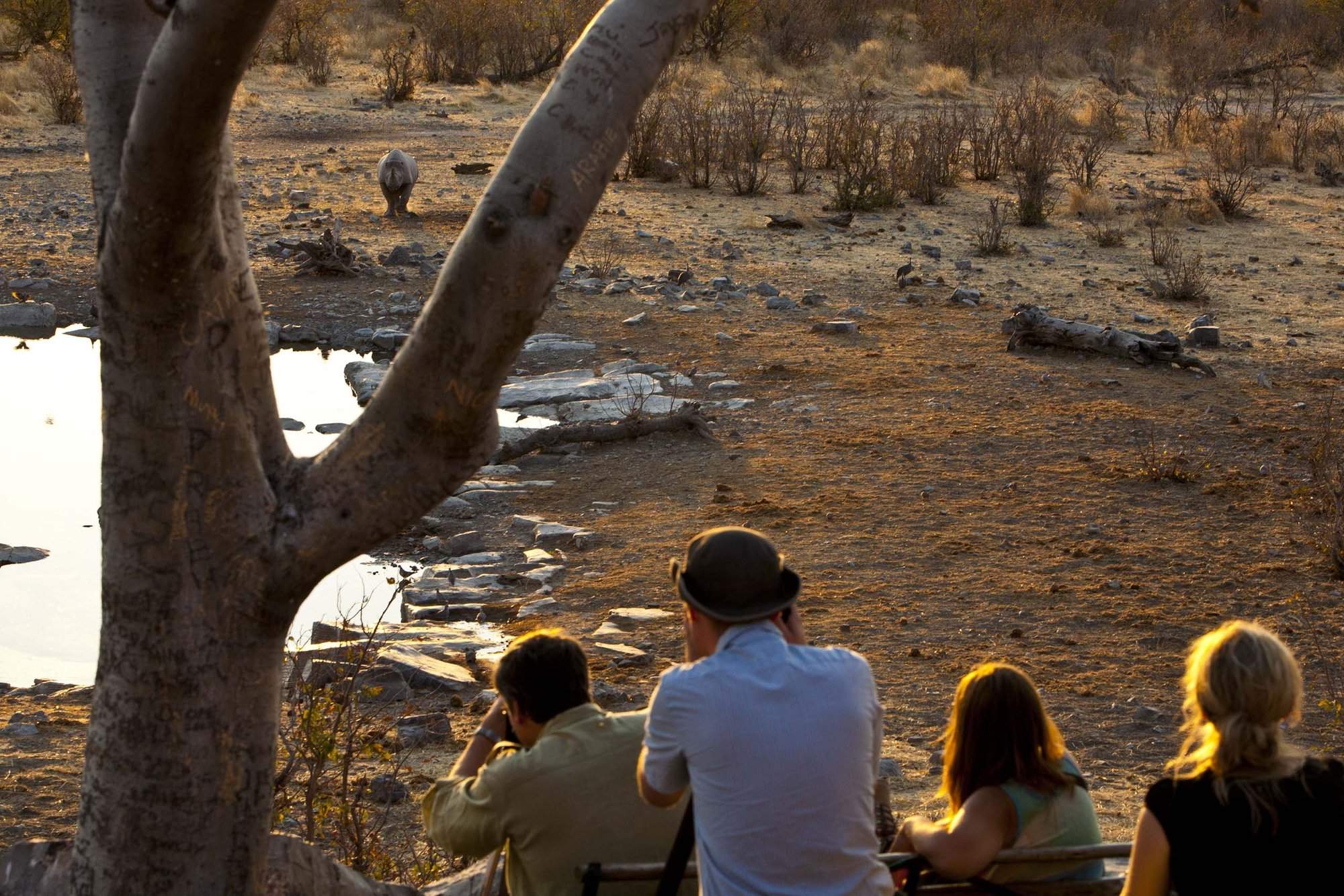
Halali Camp
The smallest of Etosha's erstwhile restcamps, overlooking its own floodlit waterhole, Halali has a superb location near the centre of Etosha Pan.
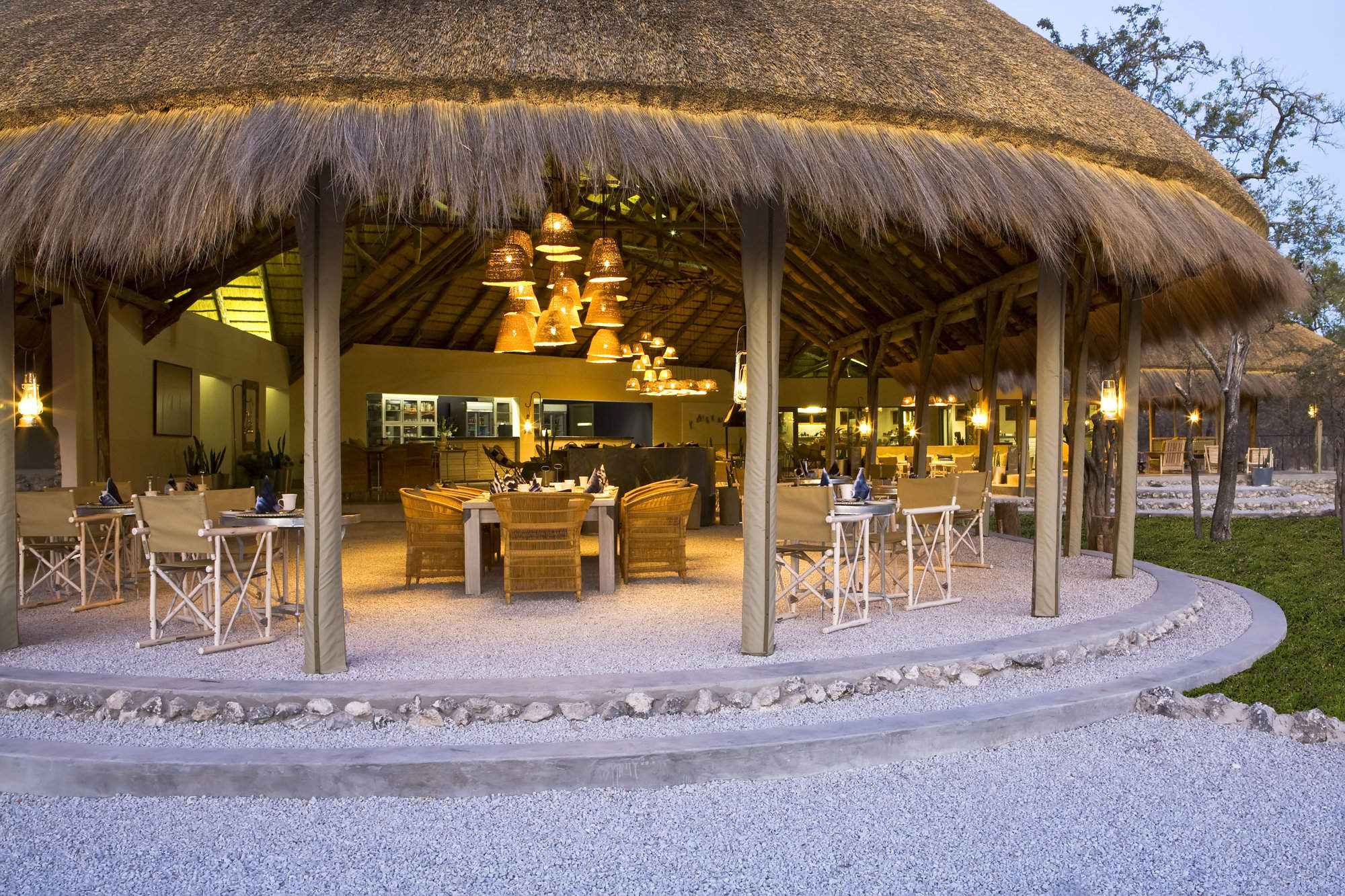
Mushara Bush Camp
The family-friendly Mushara Bush Camp offers great value and is an excellent base from which to explore Etosha National Park.
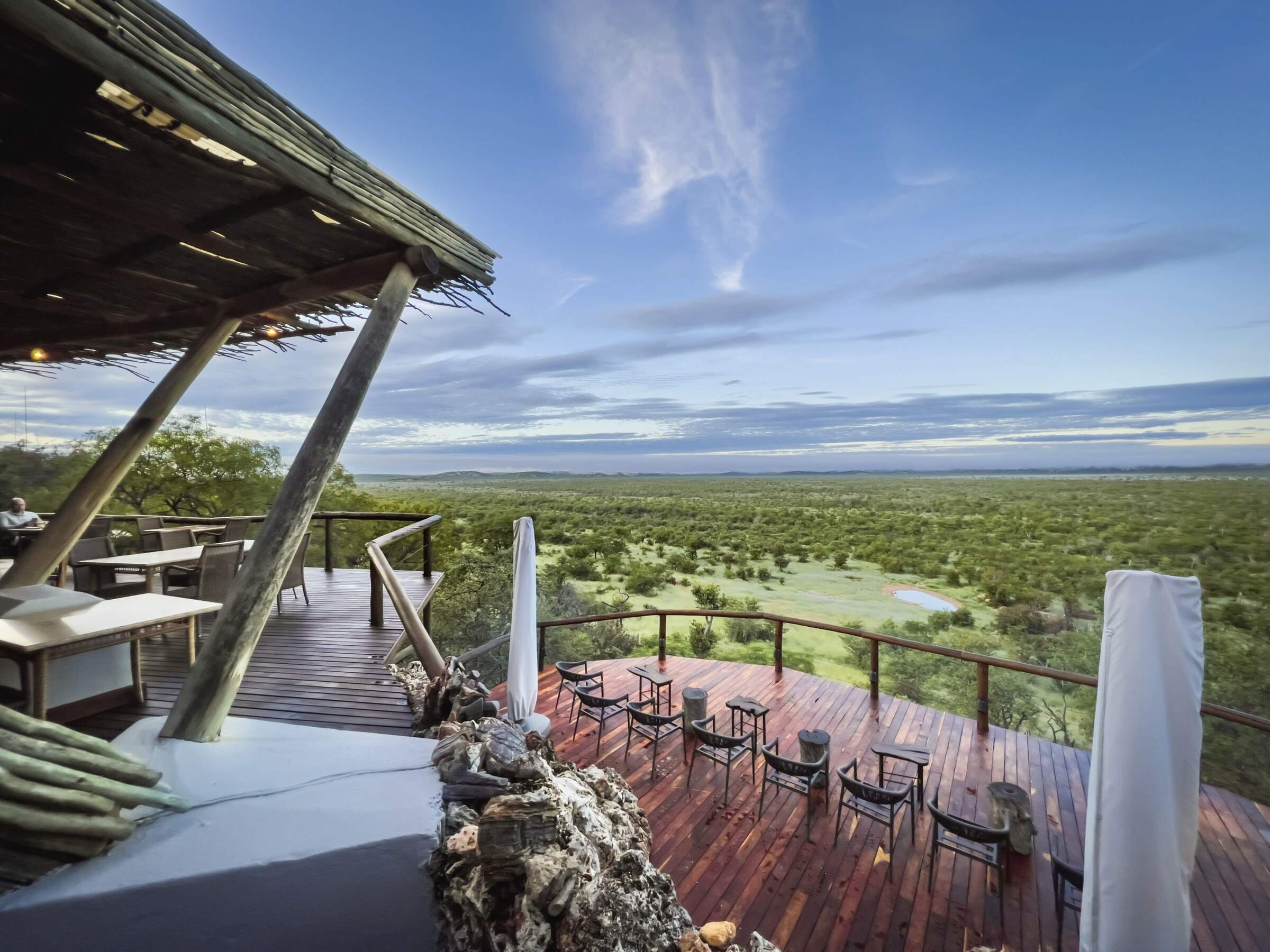
Ongava Lodge
With fantastic views over a private reserve bordering Etosha, the smart Ongava Lodge offers driving and walking safaris on the reserve, and guided drives in Etosha.
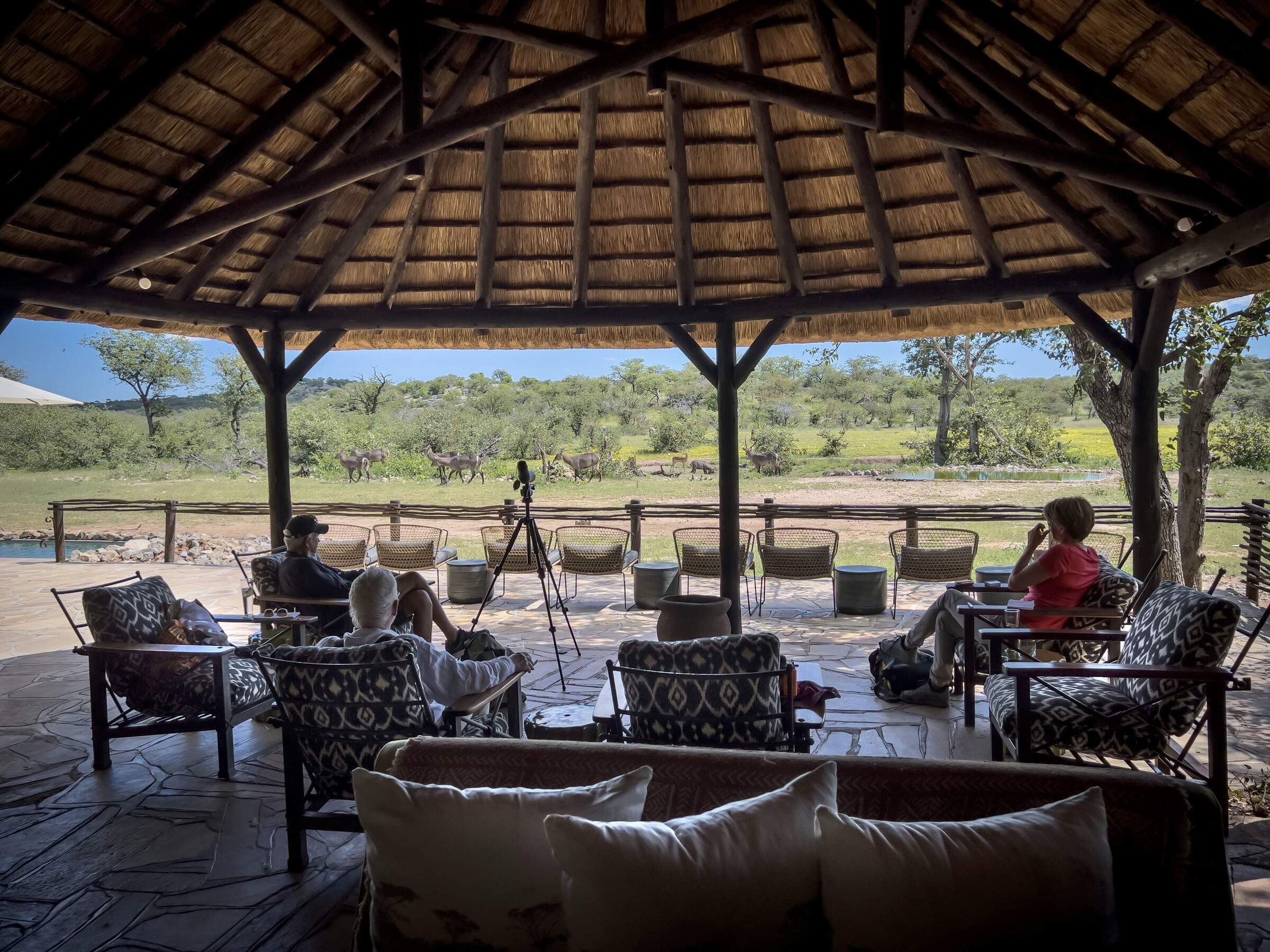
Ongava Tented Camp
Set around a waterhole on a private reserve, the small Ongava Tented Camp combines understated comfort with activities that include walks and night drives.
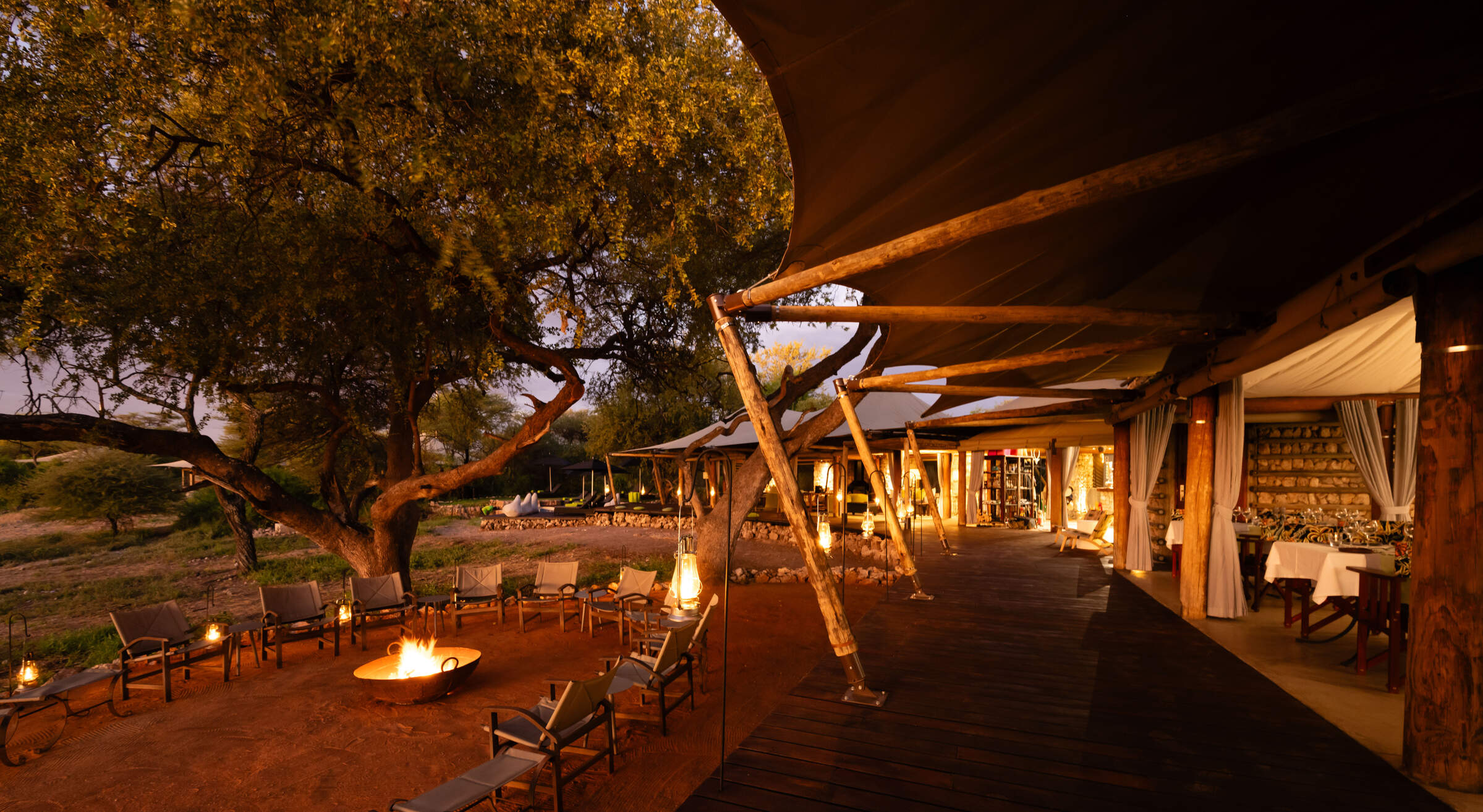
Onguma Tented Camp
Onguma Tented Camp is a lovely, little tented camp which centres around an attractive waterhole a short drive from the Von Lindequist Gate to eastern Etosha.
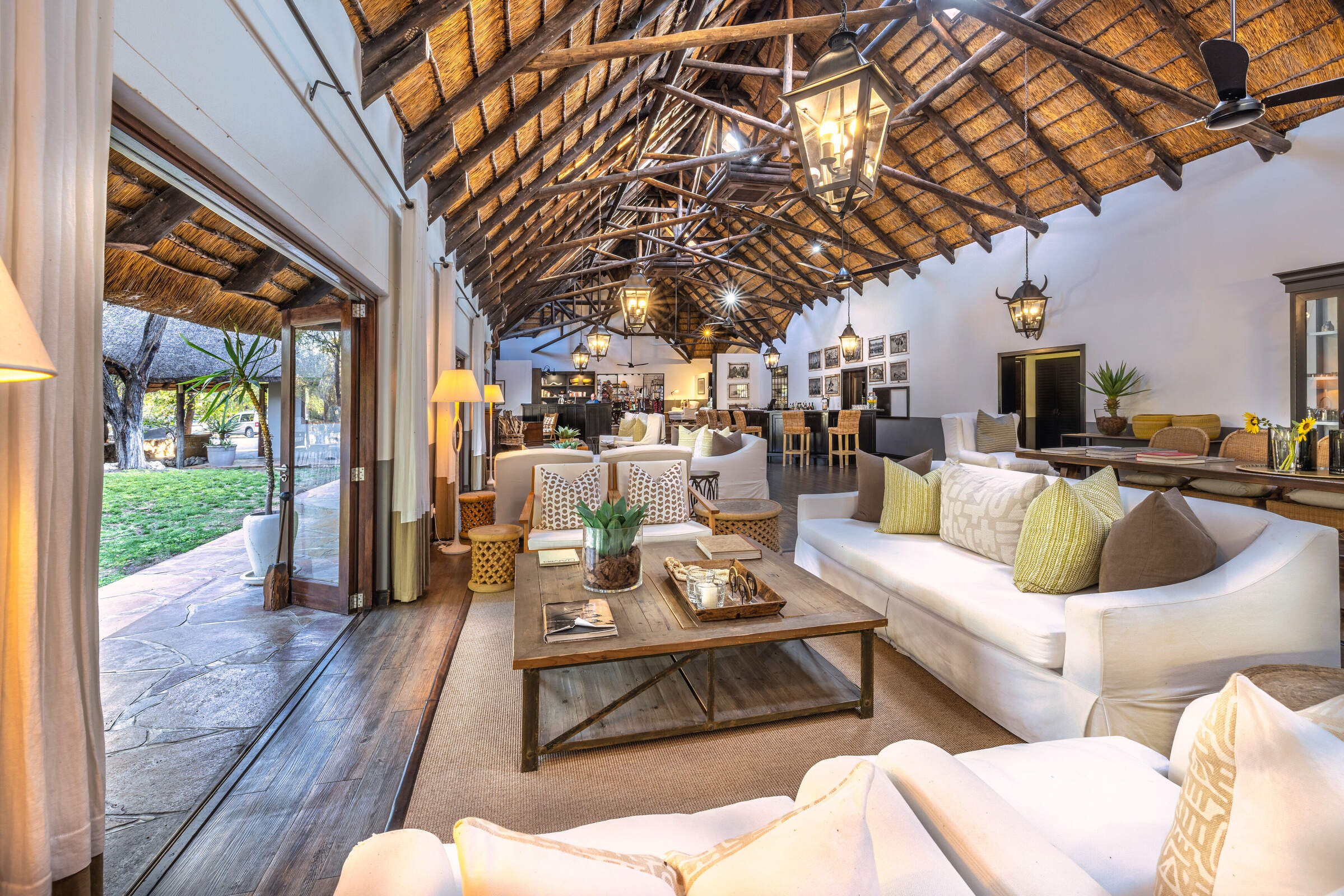
Mushara Lodge
Close to the eastern entrance to Etosha, the comfortable Mushara Lodge is well-placed for exploring the park in your own vehicle or on a guided drive.
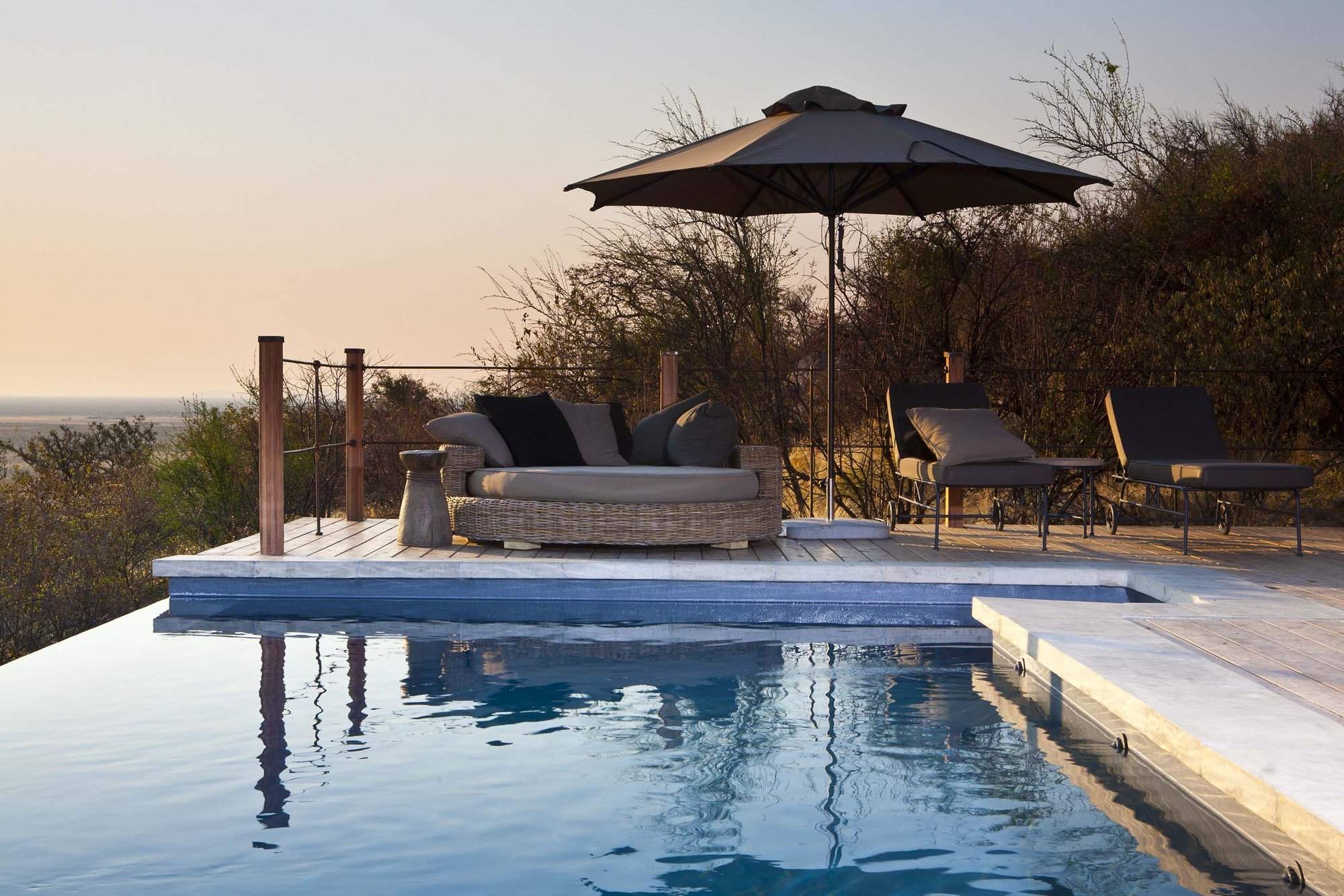
Dolomite Camp
Opened in 2011, Dolomite Camp allows visitors access to the far west side of Etosha National Park, which was previously off limits to most visitors.

Onguma Bush Camp
For great wildlife viewing without breaking the bank, the affordable and understated luxury of Onguma Bush Camp could be perfect.
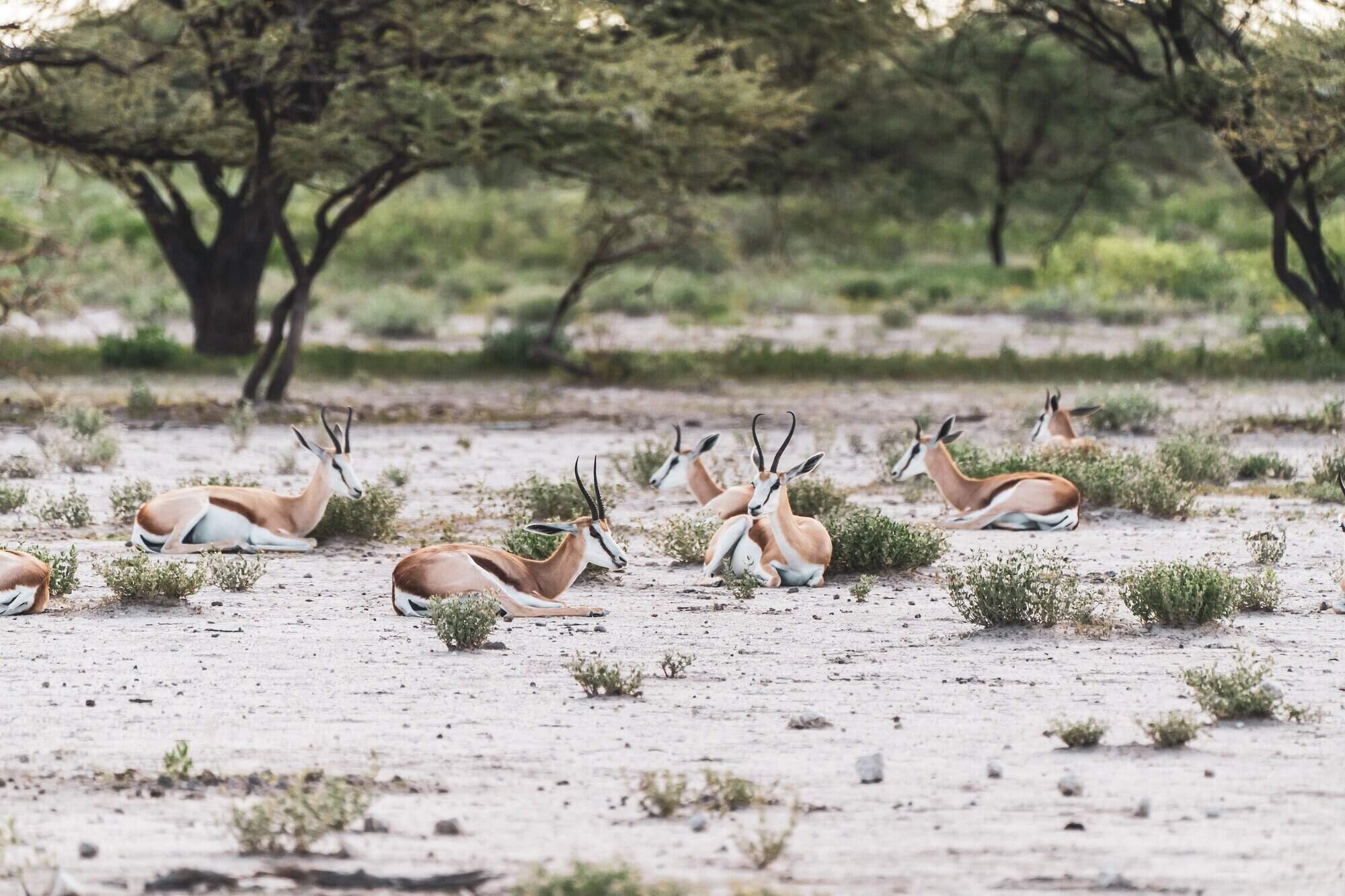
Namutoni Camp
Centred on an old fort, the government run Namutoni Camp is located just inside Etosha National Park, close to Fisher's Pan.
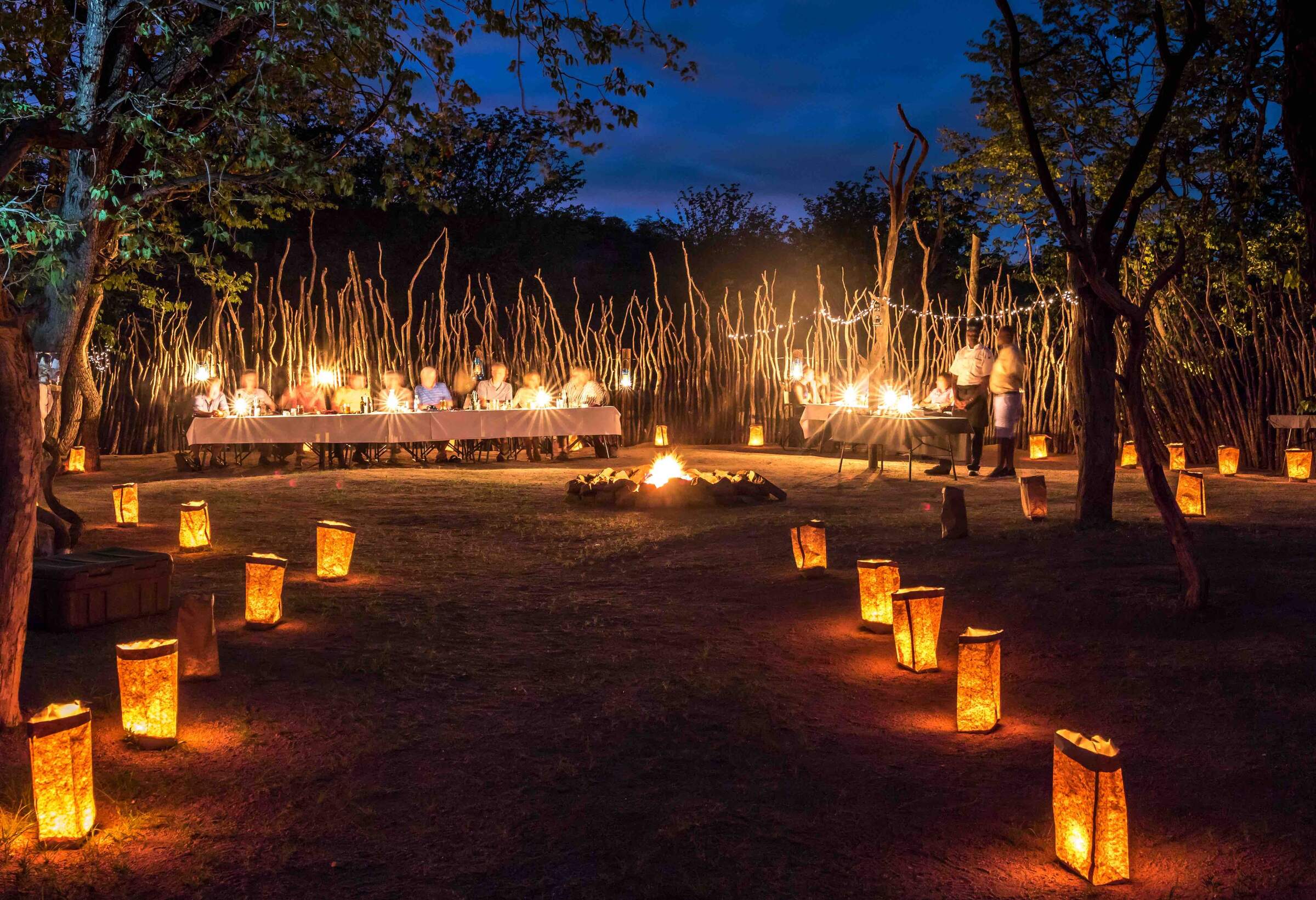
Hobatere Lodge
To the west of Etosha National Park, on the edge of Damaraland, Hobatere Lodge offers good game-viewing on its own reserve.
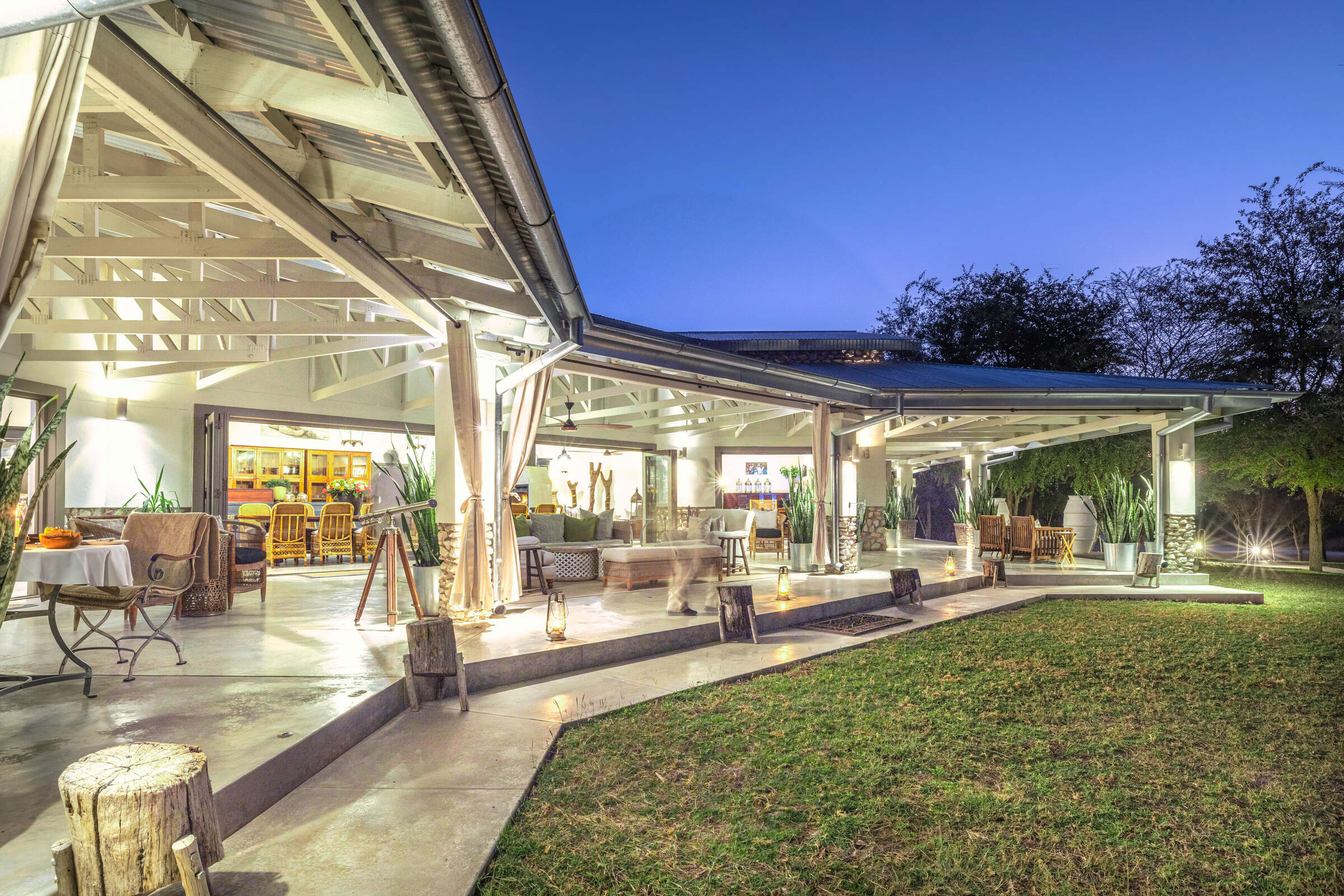
Mushara Outpost
Intimate and luxurious, Mushara Outpost is well-placed on a private reserve to explore nearby Etosha National Park on your own or on a guided drive.
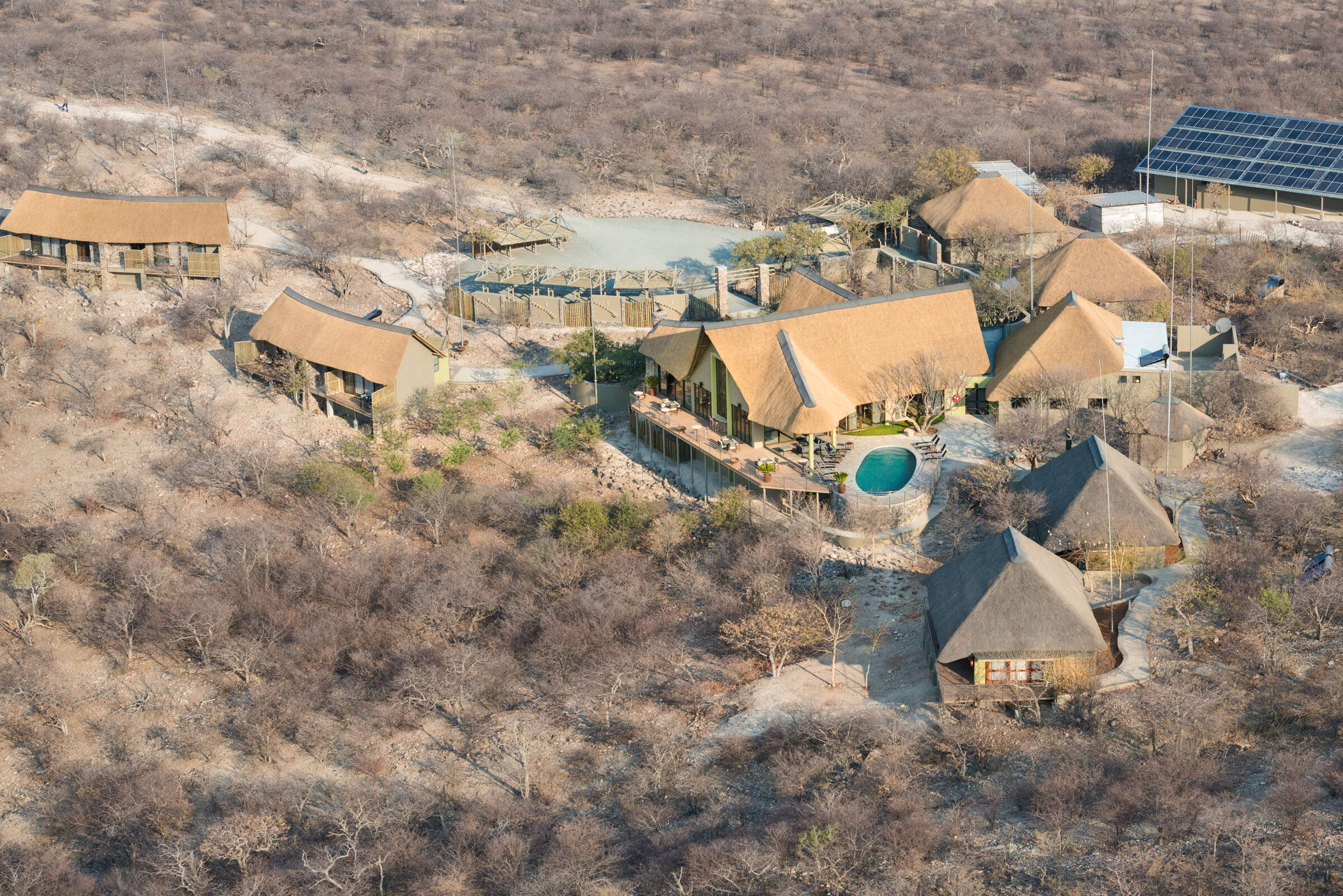
Safarihoek Lodge
At the heart of the private Etosha Heights Reserve, Safarihoek Lodge offers comfortable accommodation and excellent game-viewing.
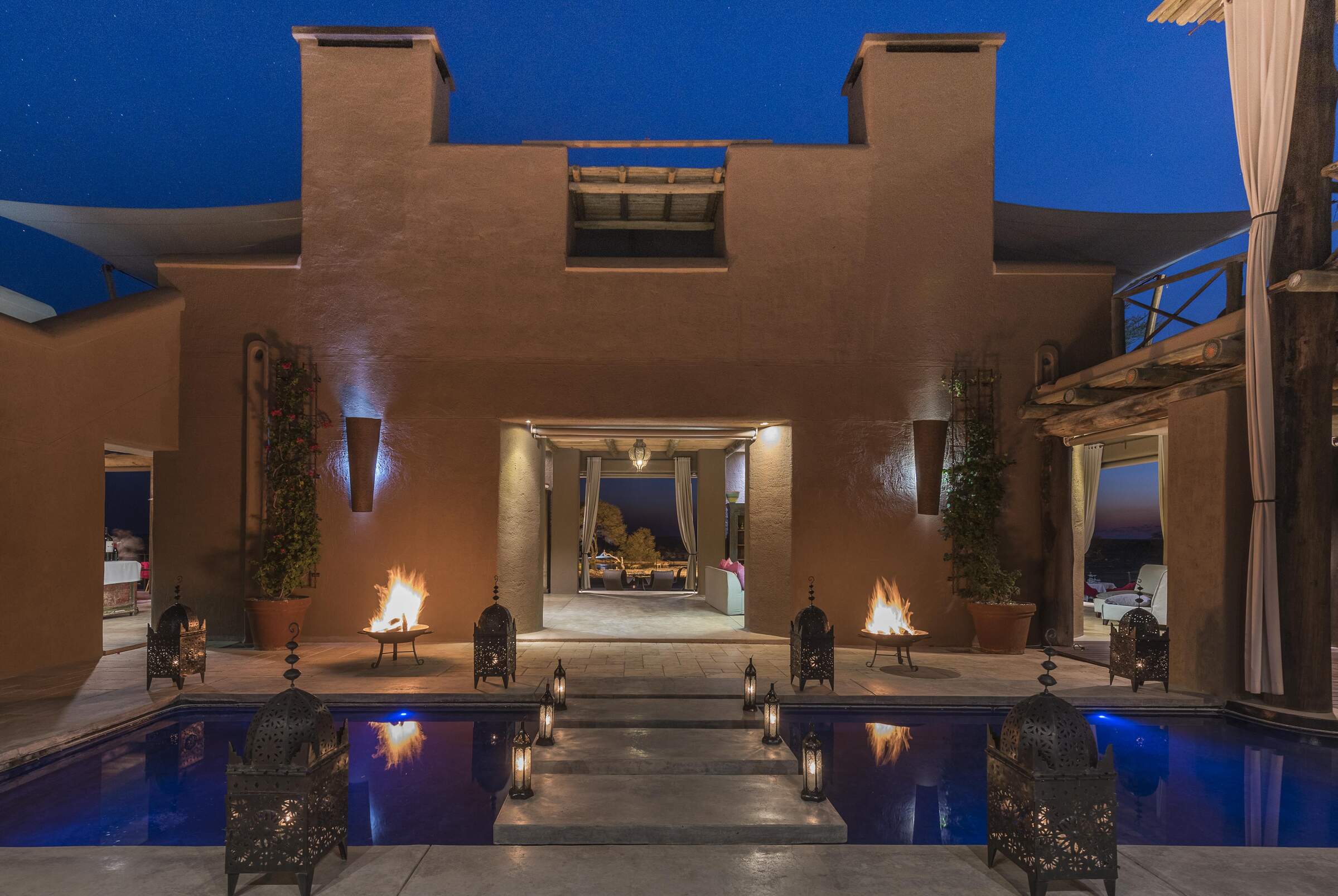
Onguma The Fort
The Fort is the jewel in the crown of the Onguma lodges, and arguably the whole of eastern Etosha.
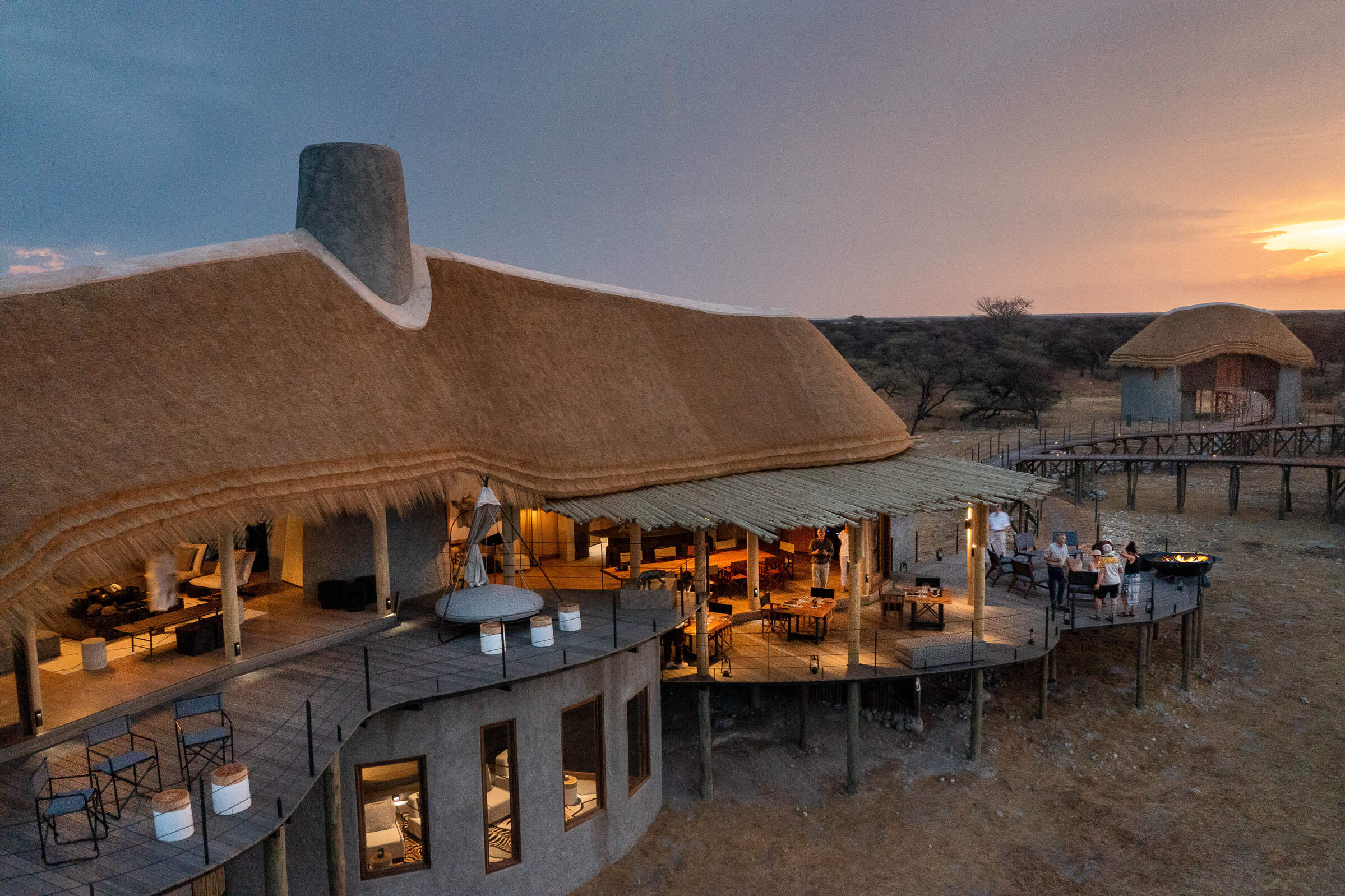
Onguma Camp Kala
For a bird’s eye view across African bush, the stilted rooms at Onguma Camp Kala are truly special.
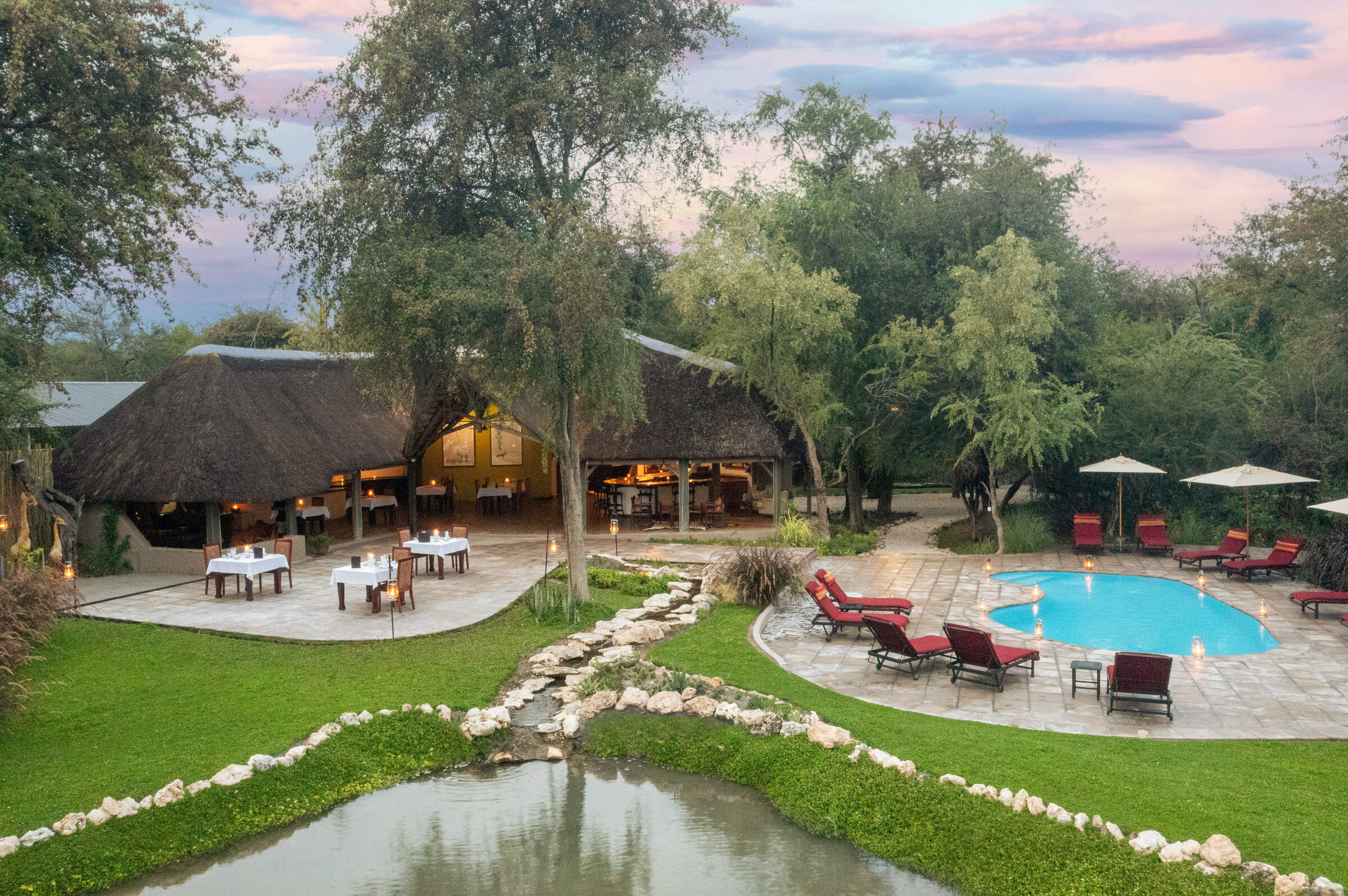
Onguma Forest Camp
From its woodland setting on the Onguma Reserve, Forest Camp is within easy striking distance of Namibia’s flagship national park.
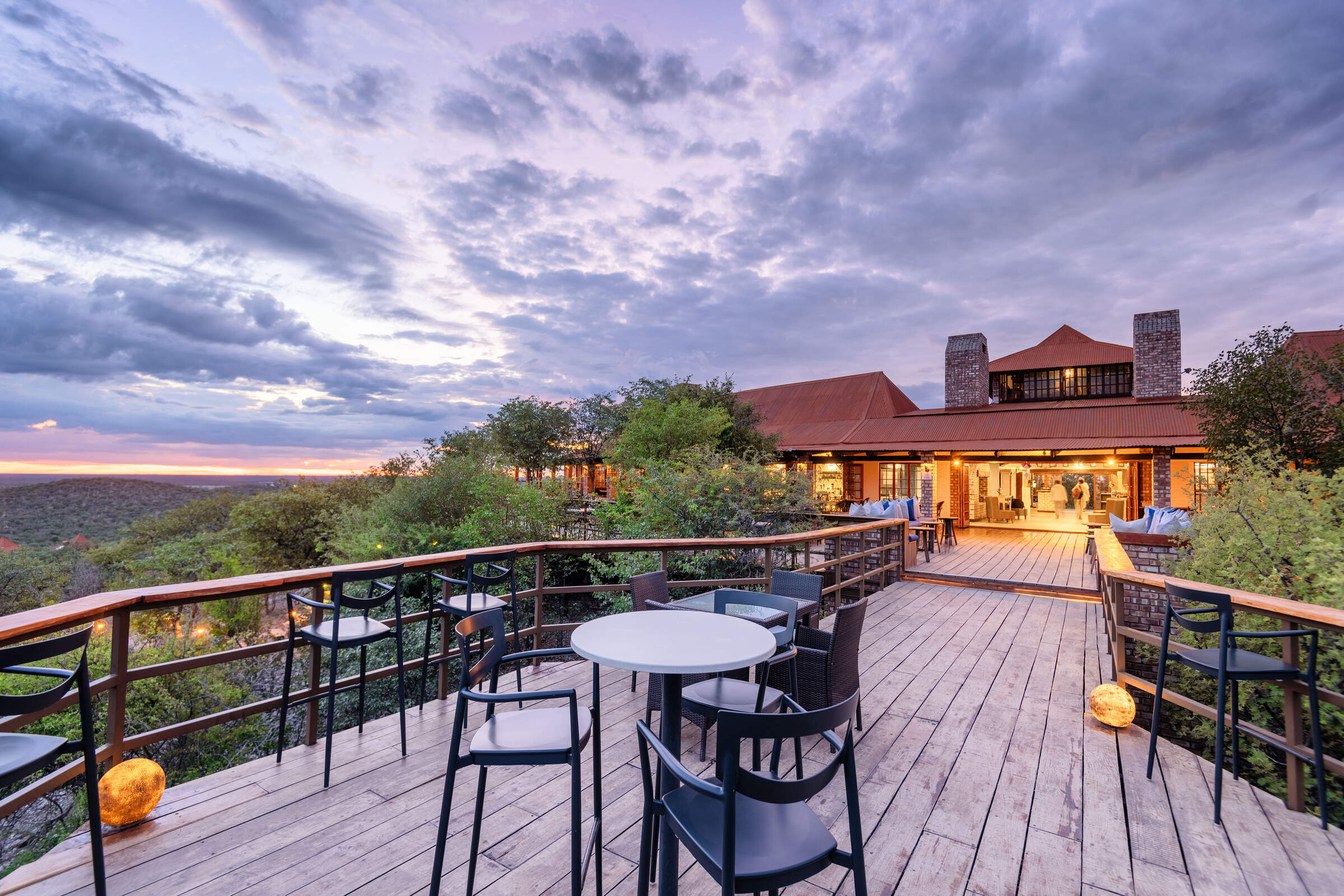
Etosha Safari Lodge
A short drive from Etosha National Park's southern entrance, Etosha Safari Lodge is a convenient base from which to explore the park.
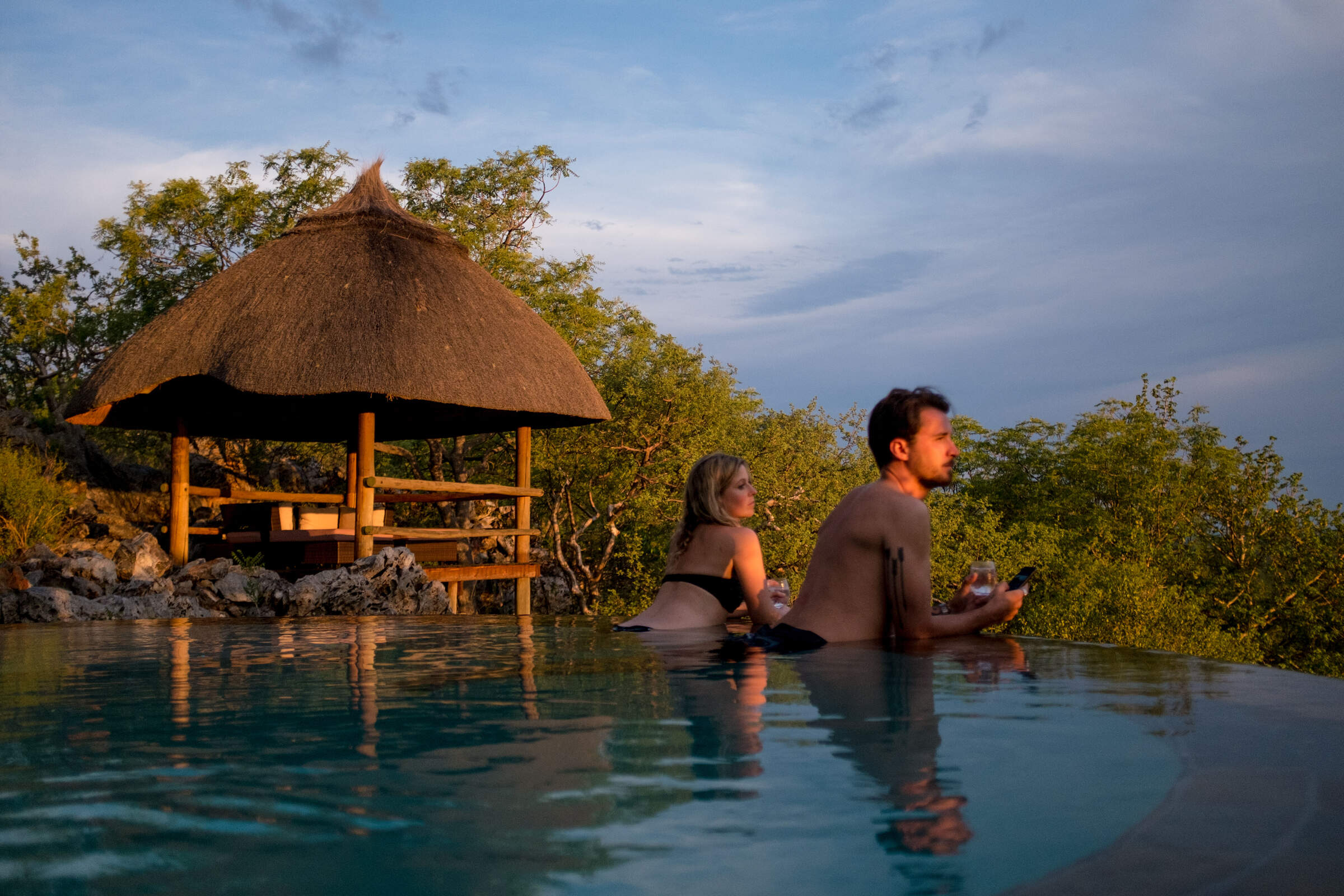
Little Ongava
The beautifully located and luxurious Little Ongava is a stunning place to stay in order to explore Etosha National Park and the private Ongava Reserve.
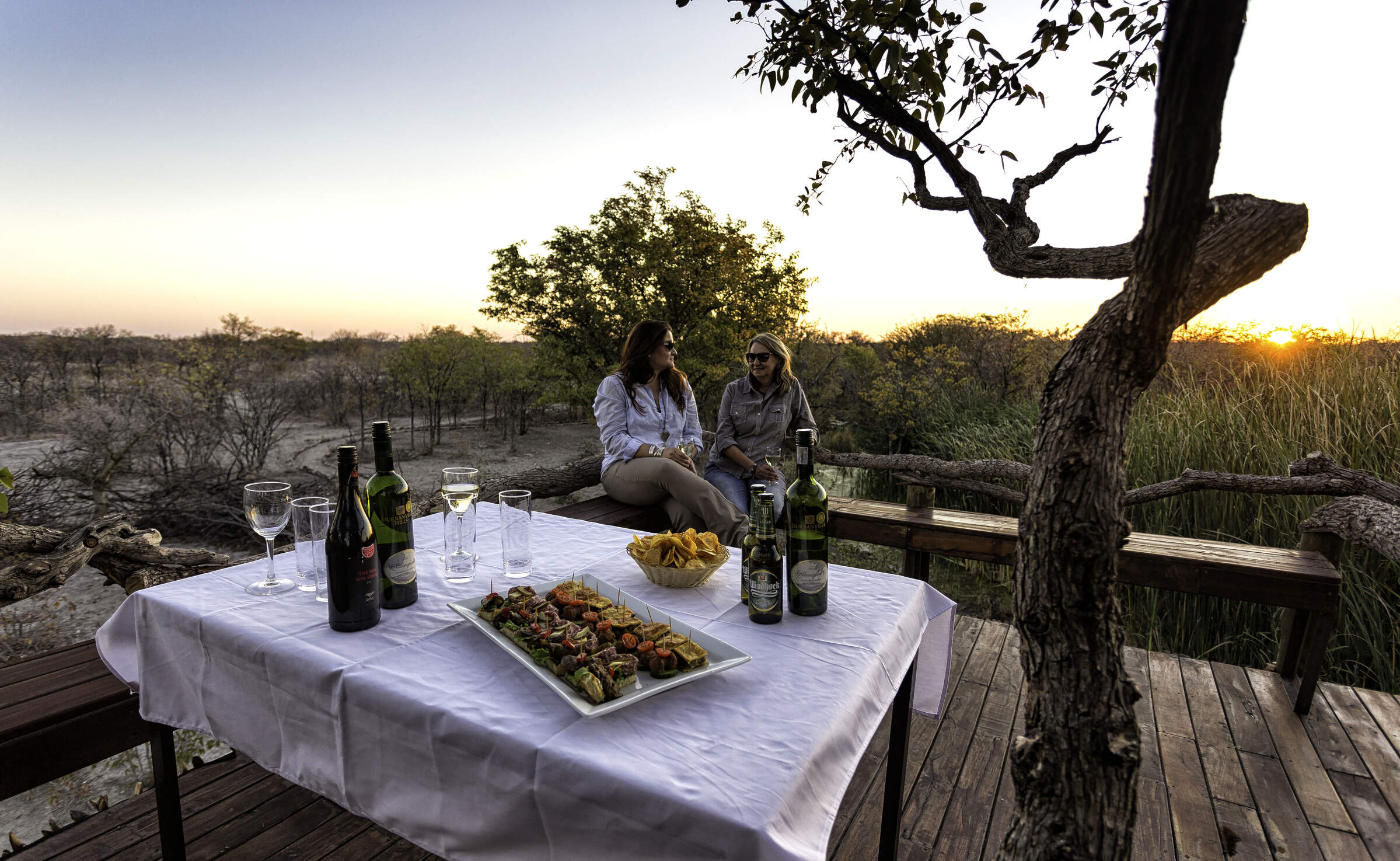
Taleni Etosha Village
Only 4km from Etosha's southern entrance, Taleni Etosha Village is an affordable base from which to explore the park.
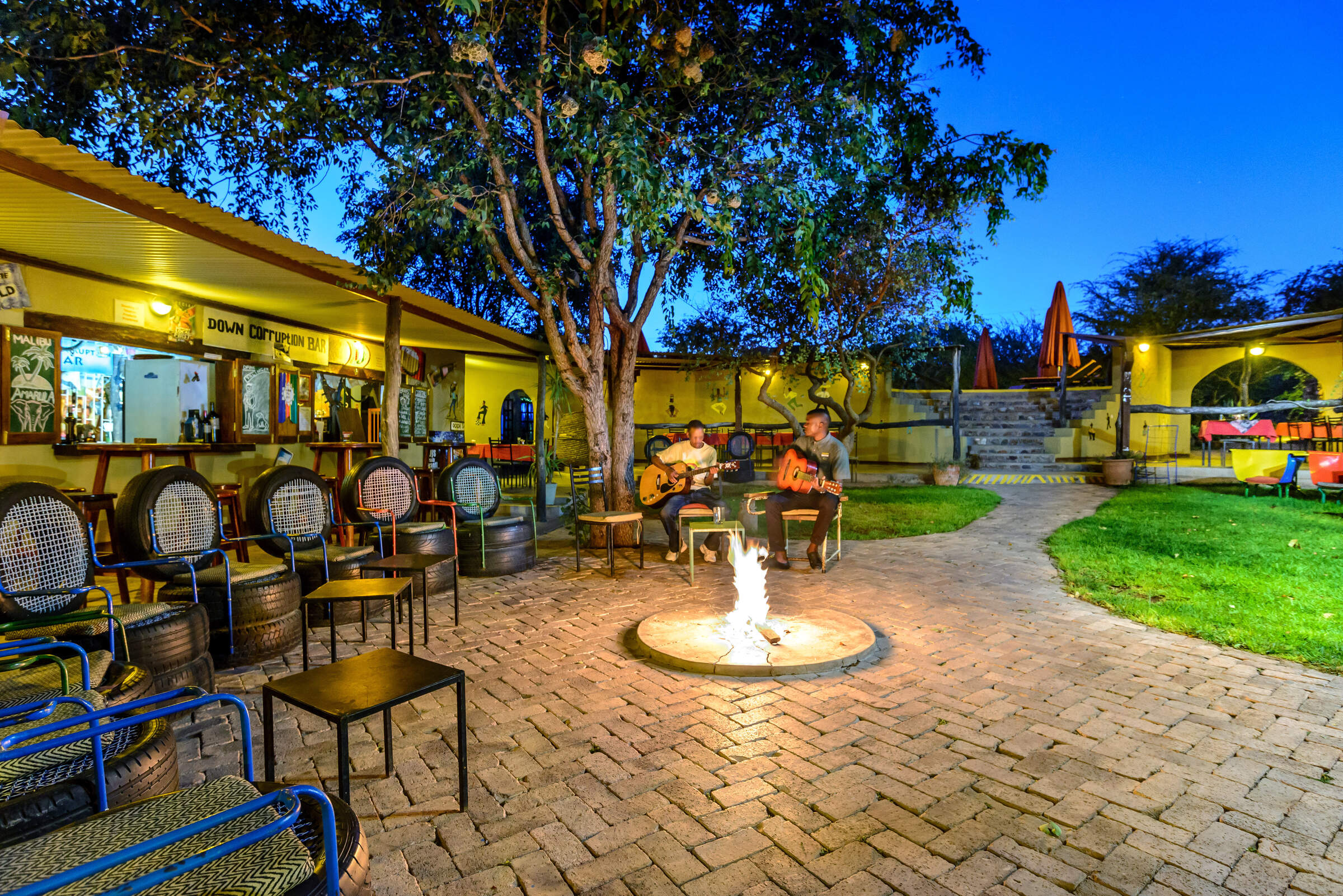
Etosha Safari Camp
Funky, low-key and very original, Etosha Safari Camp is well placed for visiting Etosha National Park on a self-drive or guided safari.
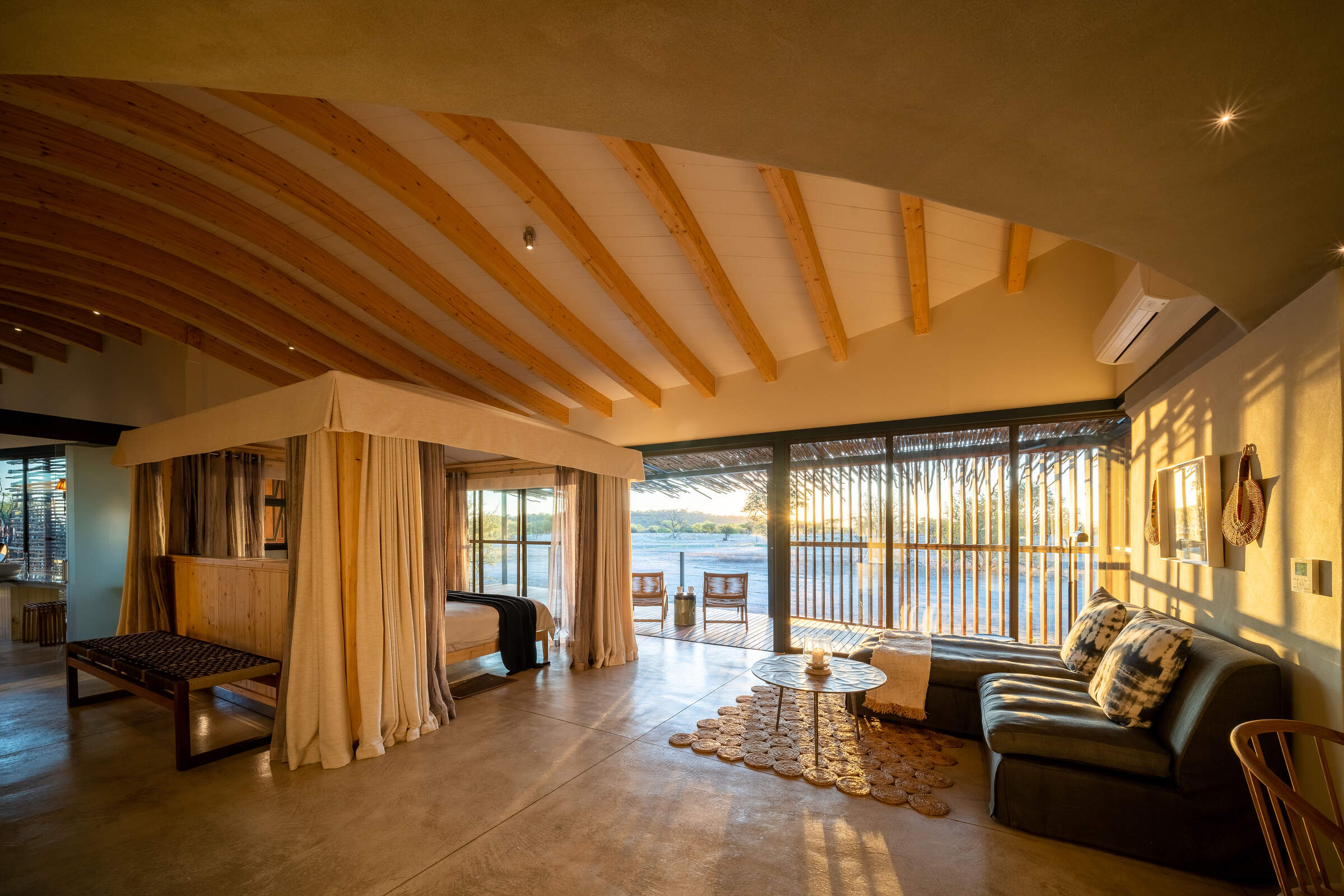
Andersson's at Ongava
With game drives on both its private reserve and in Etosha, Andersson's at Ongava also offers access to the Ongava Research Centre.
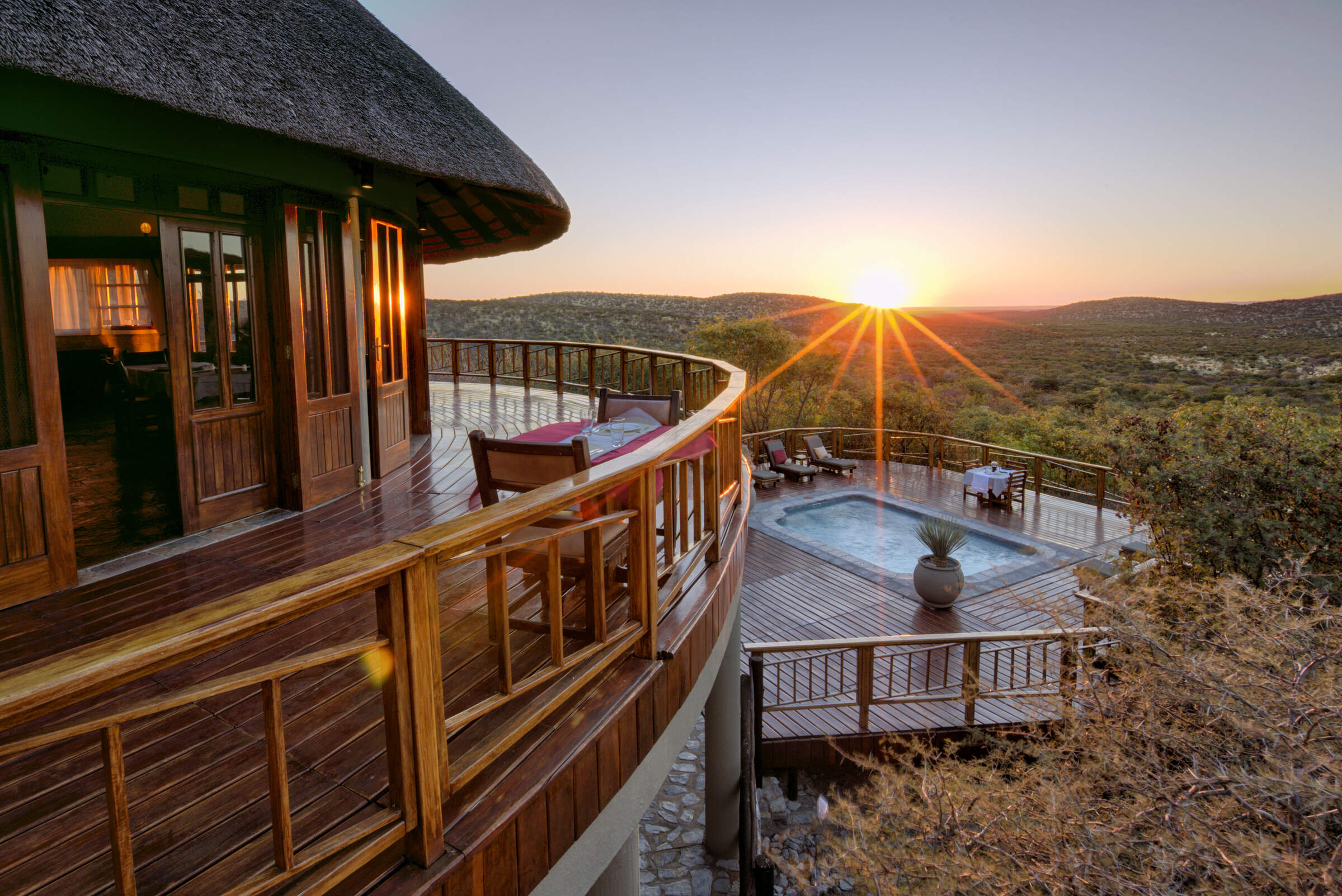
Mountain Lodge
In the heart of the private Etosha Heights Reserve, the family-friendly Mountain Lodge offers game drives and bush walks within an exclusive environment.
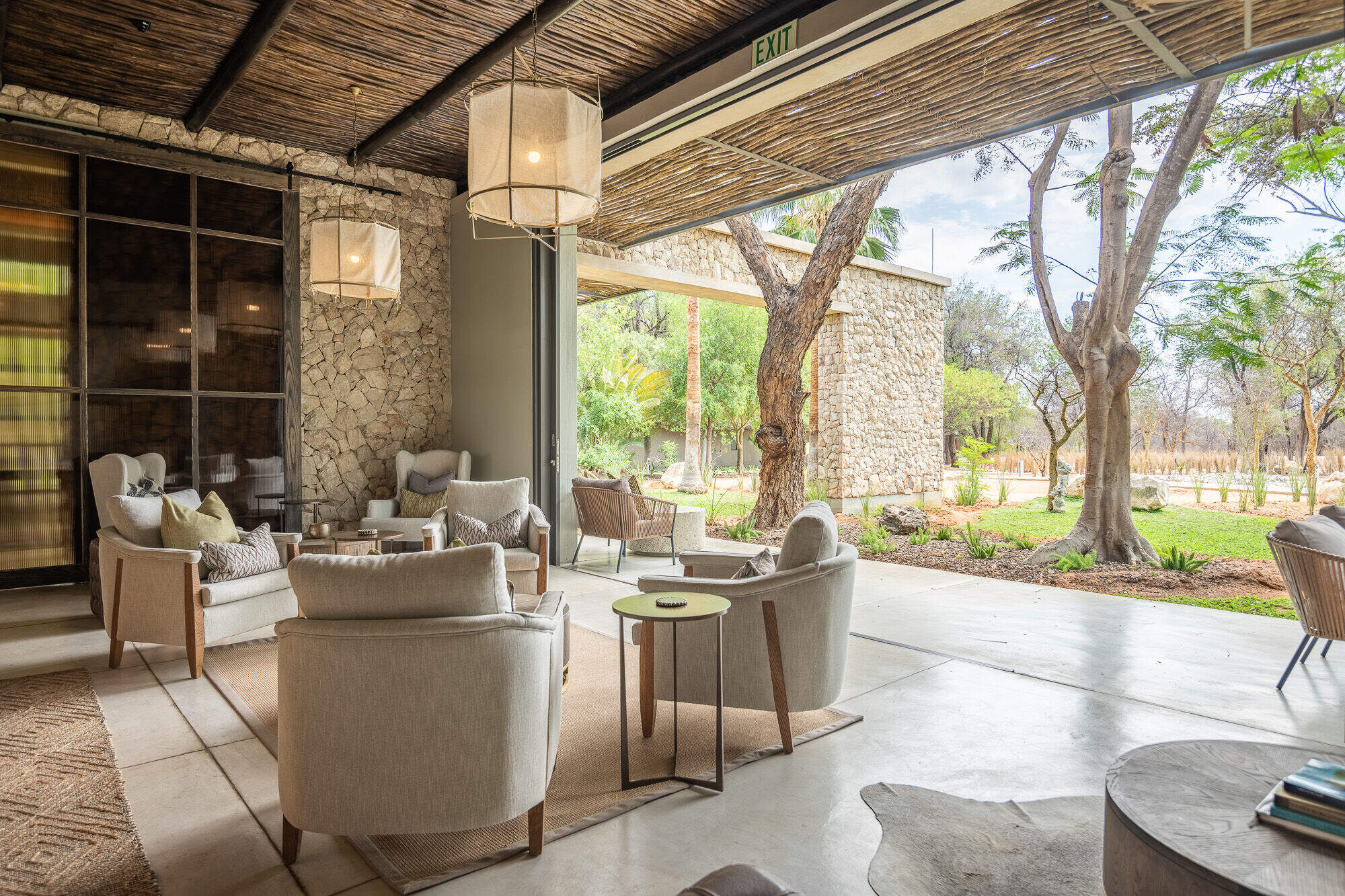
Mokuti Etosha Lodge
With 106 rooms, child-friendly Mokuti Etosha Lodge is more like a hotel than a lodge. Facilities to include a gym, spa, tennis courts and even a snake park.
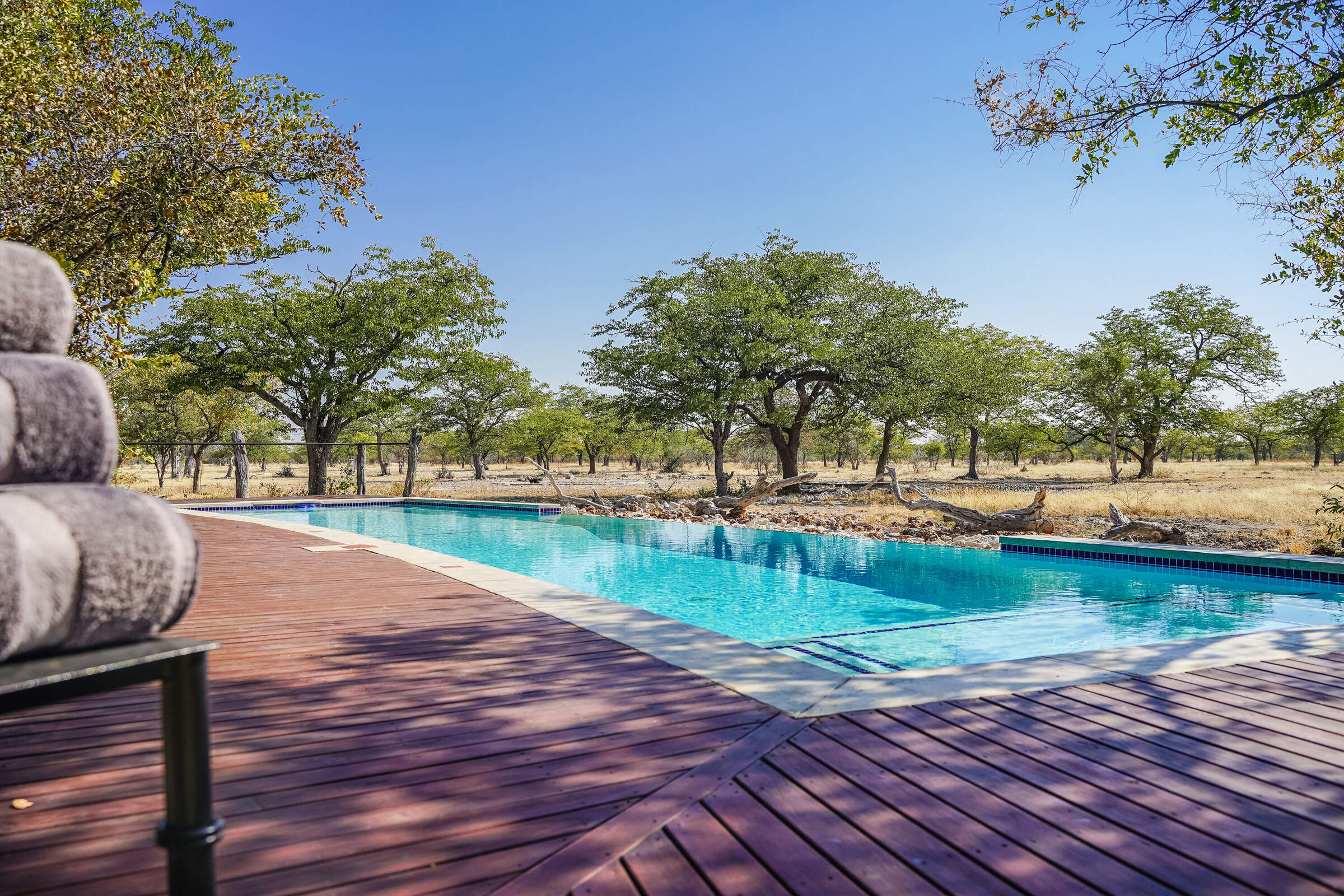
Etosha Oberland Lodge
A short drive from Etosha National Park's southern entrance, Etosha Oberland Lodge is a very comfortable base from which to explore the park, with excellent food.
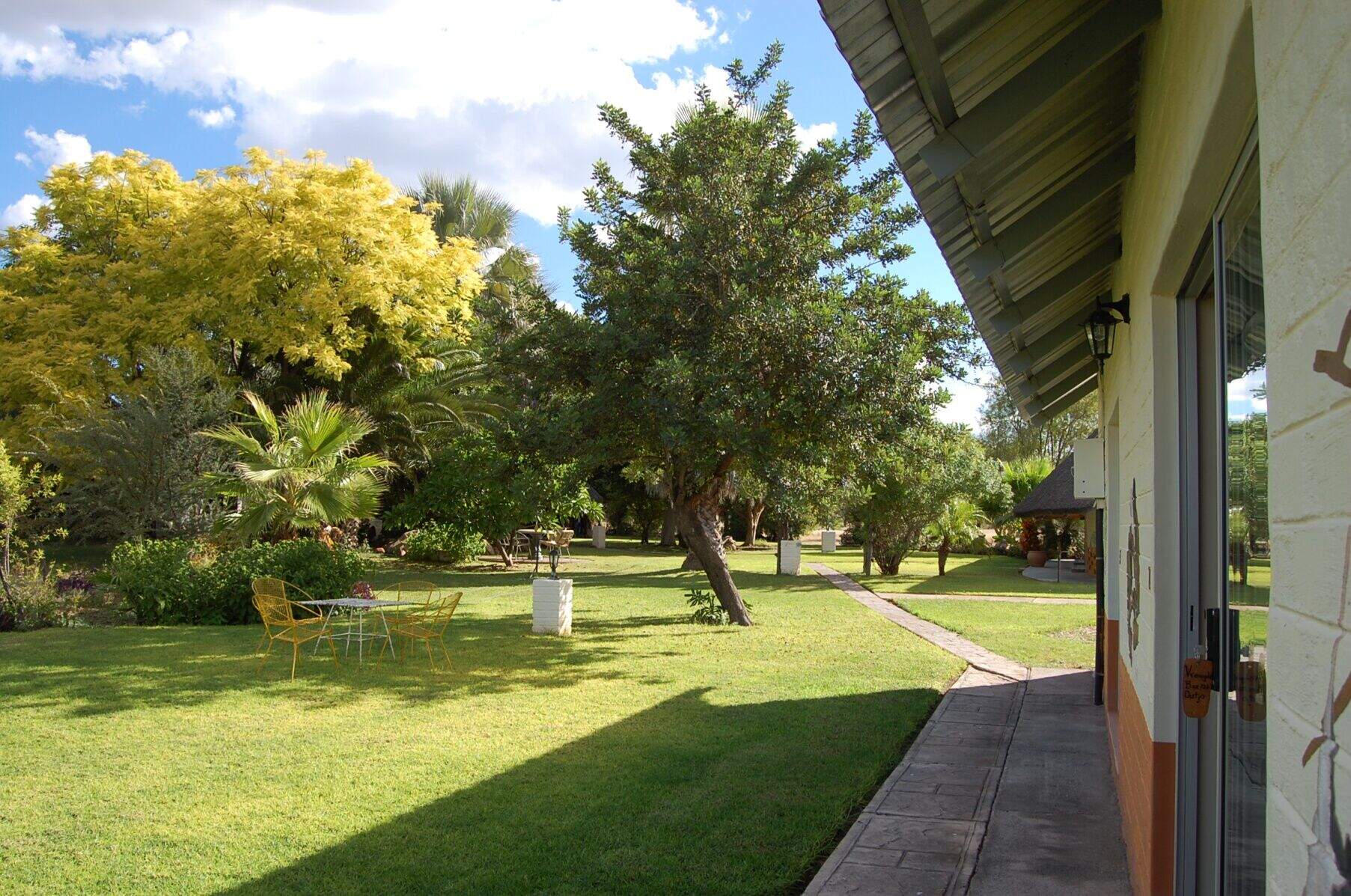
Vreugde Guest Farm
Vreugde Guest Farm is a delightful owner-run and working sheep farm where you can expect a warm welcome and charming hospitality.
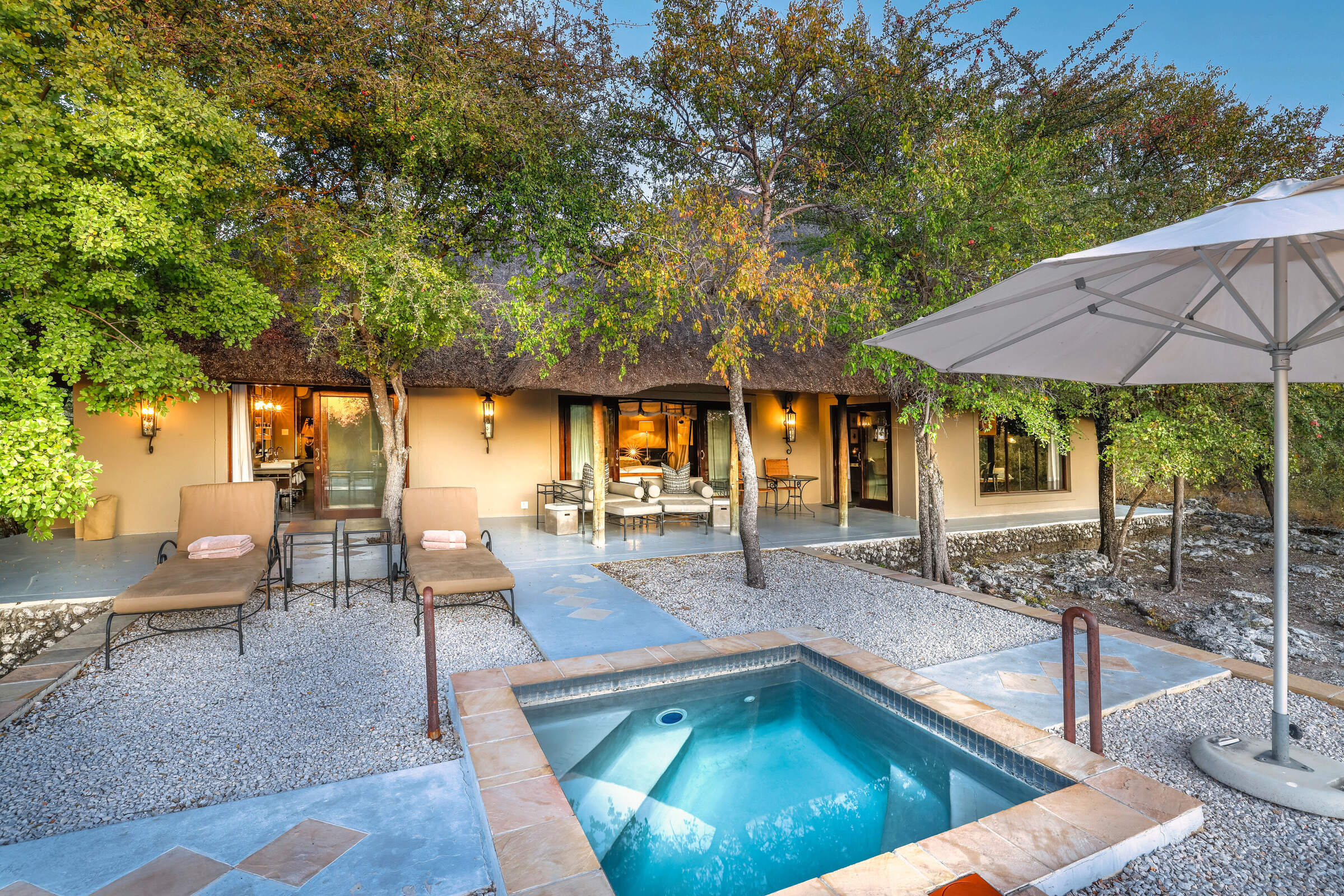
Villa Mushara
Offering luxury on a peaceful private reserve close to Etosha, Villa Mushara is a great choice for honeymooners & those wishing to indulge themselves.
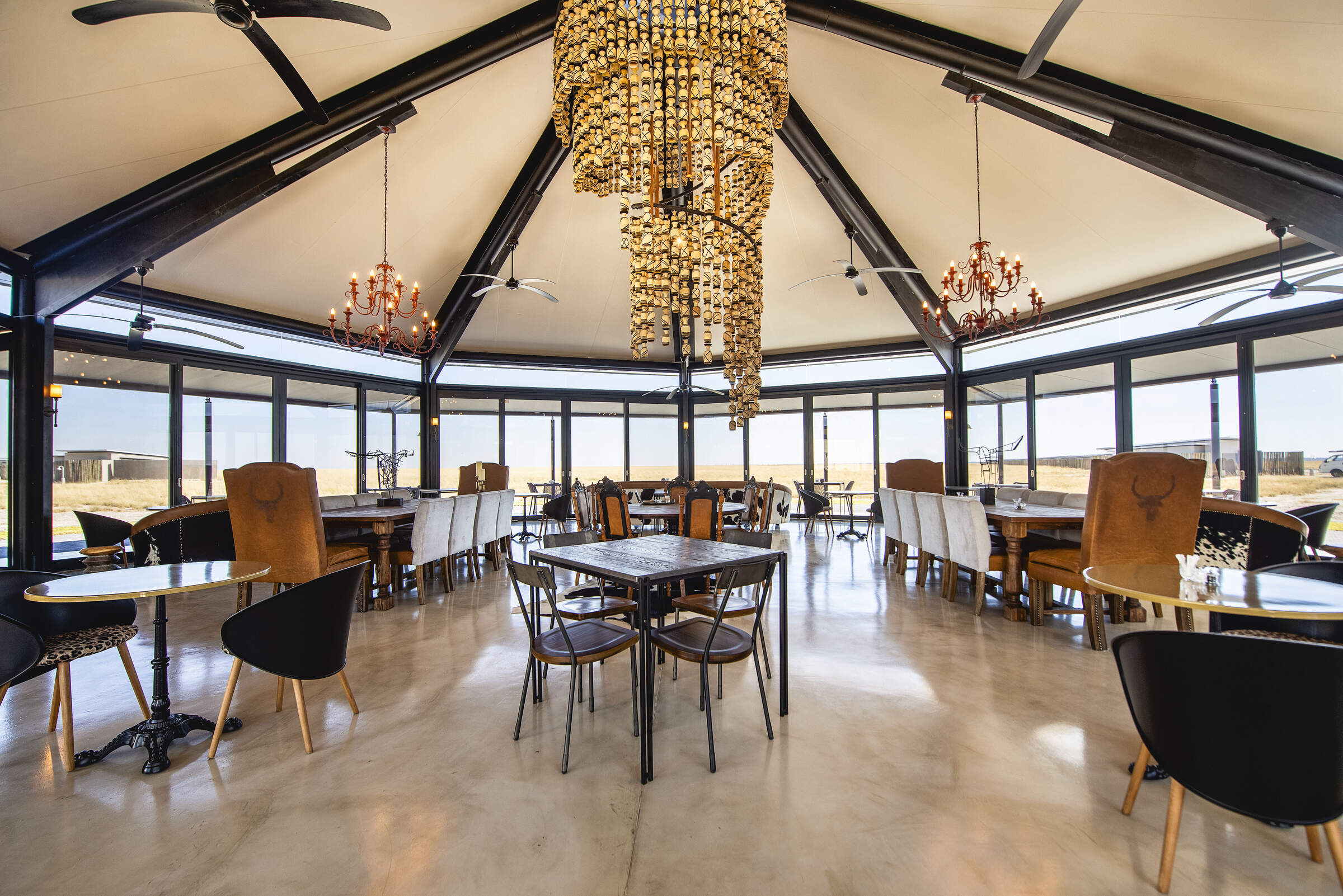
Etosha King Nehale
A short drive from the national park's northern entrance, Etosha King Nehale Lodge is an interesting and comfortable base from which to explore the park.
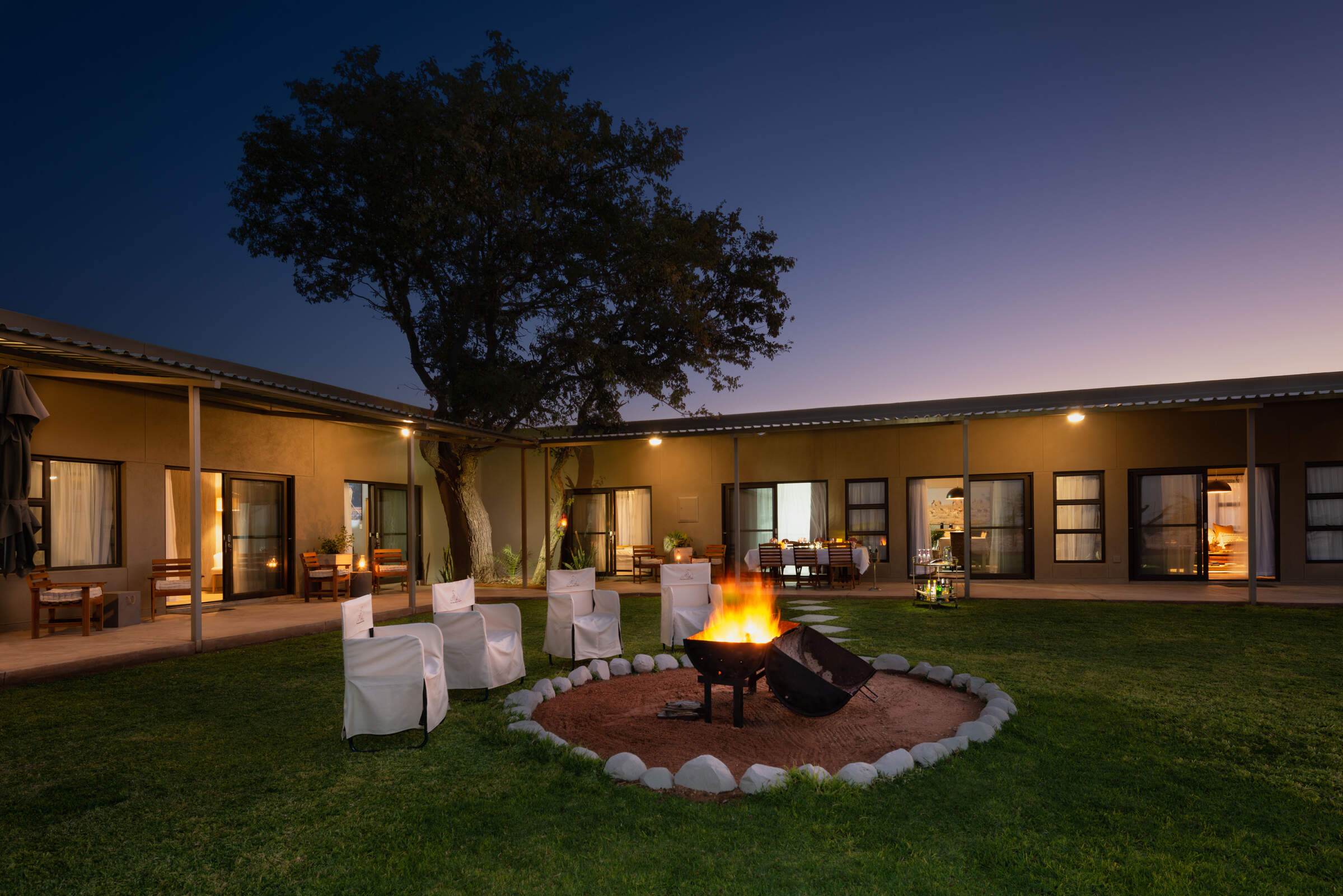
Safari House
The private Safari House on the Etosha Heights reserve is a great option families or friends travelling together.
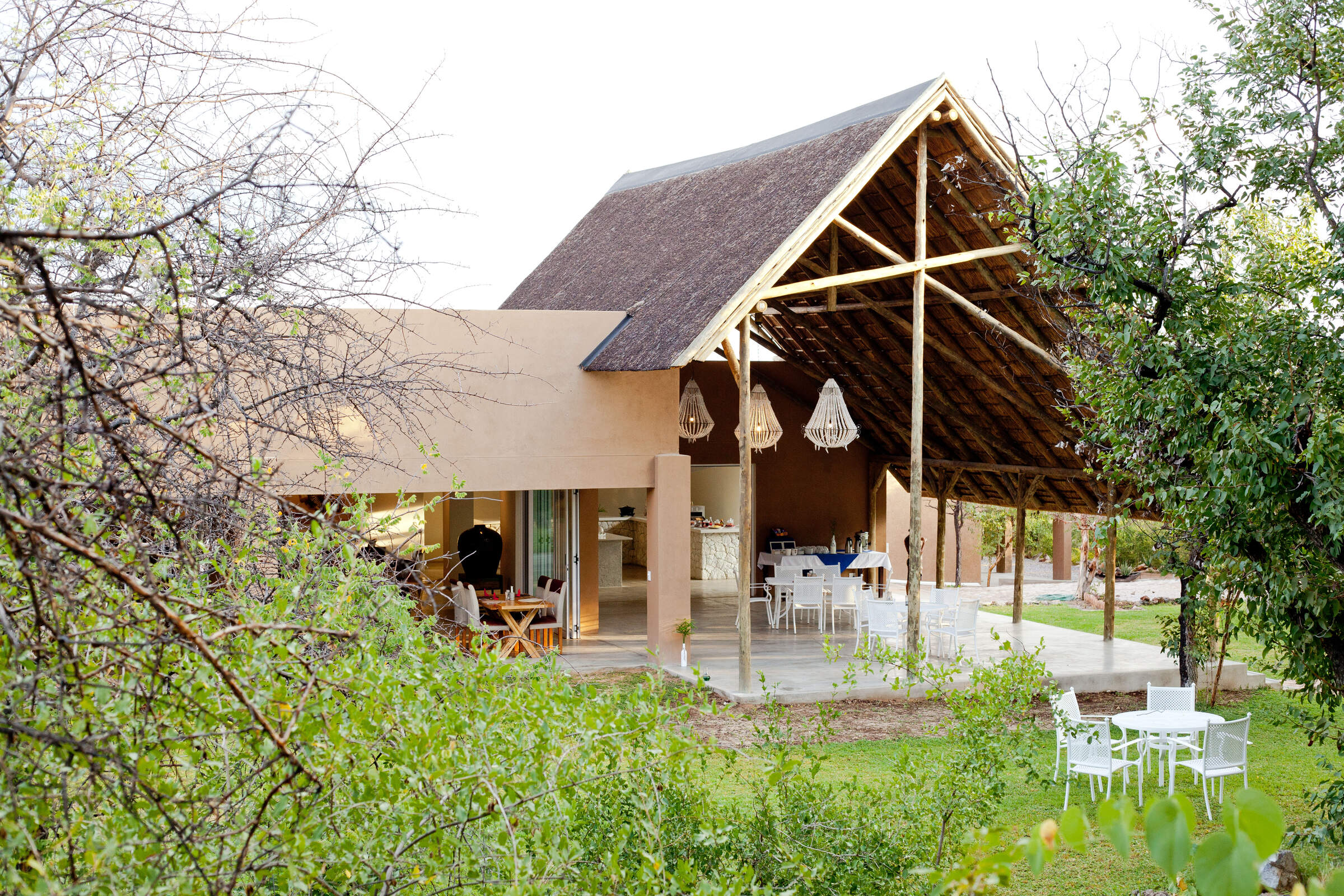
Toshari Lodge
Smart and professionally run, the hotel-style Toshari Lodge is well-placed for self-driving in Etosha National Park.
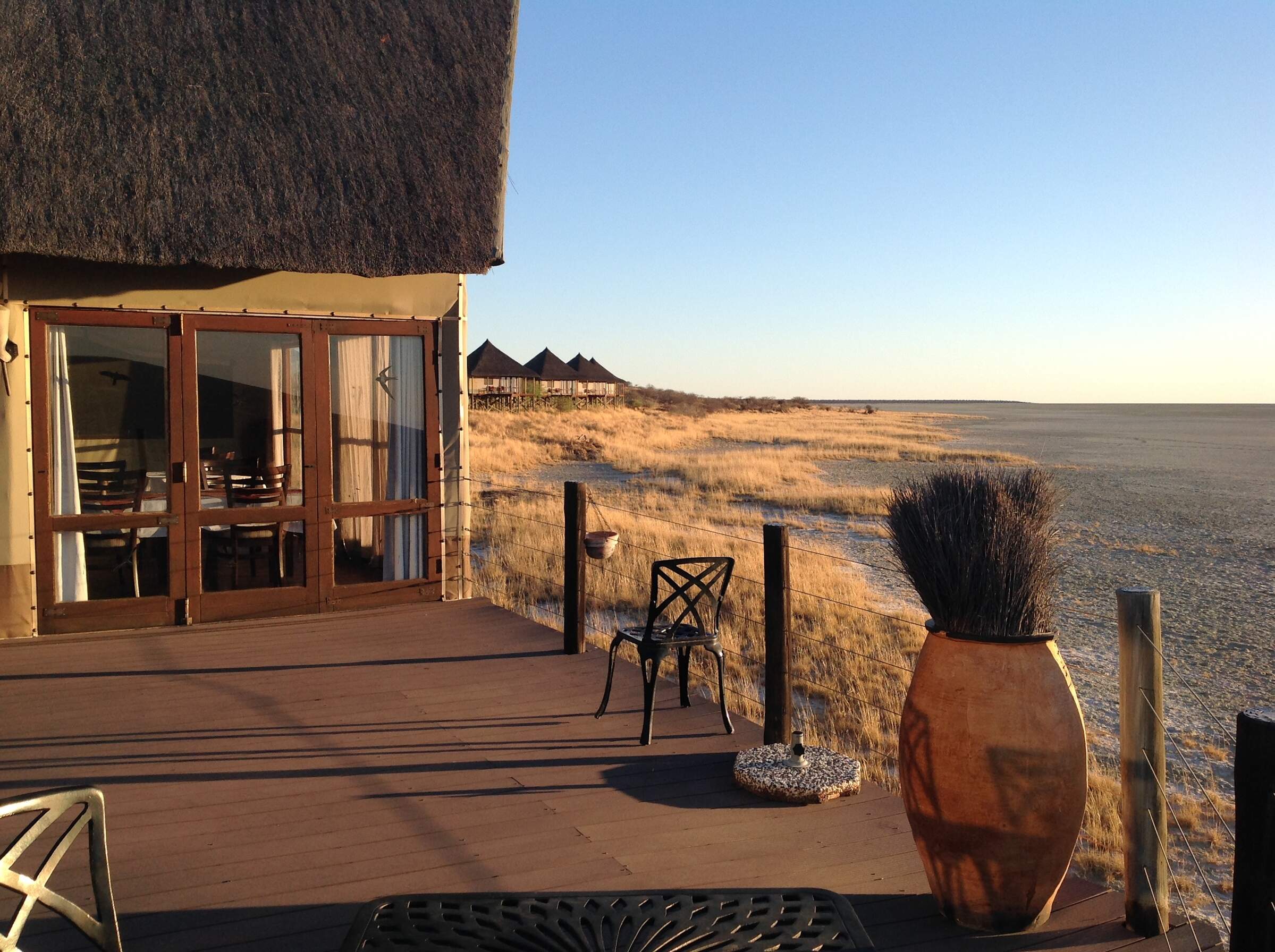
Onkoshi Camp
Onkoshi Camp is owned and run by Namibia Wildlife Resorts. Built on elevated wooden platforms it overlooks Etosha Pan.
When to go to Etosha National Park
Our month by month guide: What it's like to visit Okaukuejo Camp in Etosha National Park
Jan
Feb
Mar
Apr
May
Jun
Jul
Aug
Sep
Oct
Nov
Dec
Etosha National Park in January
January marks the start of Etosha's main rainy season. The Etosha Pan, usually a vast expanse of white clay, may partially fill with water in good rainy season, attracting flamingos and other migratory birds. The landscape transforms into a lush green oasis, providing ample food for wildlife. Many animals give birth during this time, offering chances to see newborns.
While game viewing can be challenging due to dispersed wildlife and thick vegetation, birdwatching is excellent. Migratory species arrive and birds display breeding plumage. The Okaukuejo and Halali waterholes remain active, though less crowded than in dry months. Visitors should be prepared for occasional thunderstorms and potentially muddy roads, especially around Fischer's Pan.
The vibrant greenery and the presence of young animals make this a fantastic time for photography.
- Variable weather: hot, dry or humid with rain
- Occasional localised thunderstorms in Etosha
- Many animals with young; spectacular birdlife
- Wildlife dispersed, harder to see in Etosha
- Fewer tourists; low rates at most lodges
Our view
This is not a great time to visit
Weather in January
Etosha National Park in February
February is typically Etosha's wettest month. The Etosha Pan may be partially filled, creating a spectacular sight and attracting numerous waterbirds, including flamingos. The landscape is vibrantly green, with many animals raising their young.
While game viewing can be more challenging due to the abundance of water and vegetation, patient observers can spot a variety of wildlife, and share their sightings with fewer other visitors. Birdwatching is excellent, with many species in breeding plumage. The Fairy Tale Forest near Okaukuejo is particularly lush during this time.
Visitors should be prepared for occasional thunderstorms and potentially challenging road conditions, especially in the eastern part of the park. The lush environment and the presence of young animals provide a unique opportunity to witness the park's life cycle.
- Variable weather with occasional thunderstorms
- Bush feels alive; birdlife at its peak in Etosha
- Wildlife in Etosha dispersed, harder to spot
- A variety of newborn and young wildlife to see
- Few tourists; lowest rates for accommodations
Our view
This is not a great time to visit
Weather in February
Etosha National Park in March
As Etosha's main rains taper off, March offers a mix of wet and dry days. The landscape remains green and alive, with insects and smaller animals more easily seen, and many birds and animals are finishing raising their young.
The Etosha Pan may still hold some water, attracting flamingos and other waterbirds. Game viewing improves as the month progresses and animals start to herd together at permanent water sources. The Okaukuejo, Halali, and Namutoni waterholes become increasingly active.
Birdwatching remains excellent, with many migrant species still around. The Dolomite Camp area in the west offers good chances to spot rarer antelope species like black-faced impala.
The transition from wet to dry conditions provides a fascinating glimpse into the park's seasonal changes.
- Weather variable; thunderstorms less frequent
- Animals well-fed after months of abundance
- Wildlife in Etosha still dispersed, harder to see
- Migrant birds prepare to leave the park
- Few visitors; rates often low at Etosha lodges
Our view
A good time to visit, with pros & cons
Weather in March
Etosha National Park in April
April typically sees dry weather dominating in Etosha, with decreasing chances of rain. The landscape remains relatively green, and animals are in excellent condition with shiny coats. Increasing numbers of elephants seen as the herds begin to use the permanent water sources. The Okaukuejo waterhole becomes particularly active, especially in the evenings.
Photographers benefit from clear air and lush, green backdrop. Night drives from camps like Halali offer chances to see nocturnal animals. Birdwatching remains good, though some migratory species begin to depart, and the Fischer's Pan area can still be productive for waterbirds if there's residual water from the rainy season.
The shift towards drier conditions improves the chances of wildlife sightings.
- Becoming drier and cooler, especially at night
- Few visitors except around Easter; low rates
- Wildlife in Etosha still relatively spread out
- Migrant birds have largely left the park
- Fresh air and often green landscapes in Etosha
Our view
A good time to visit, with pros & cons
Weather in April
Etosha National Park in May
May marks the transition to Etosha's dry season. The landscape starts to dry out, but may still retain some greenery. Wildlife increasingly gathers around permanent water sources, making game viewing more predictable. The Okaukuejo, Halali, and Namutoni waterholes become excellent spots for animal observation – especially when floodlit after dark. Night drives offer opportunities to see nocturnal species like leopards and owls.
The Etosha Pan is usually dry, creating a stark, shimmering backdrop for photography. Birdwatching remains good, with 340 different species recorded in the park. The western part of the park, accessible from Dolomite Camp, offers chances to see rarer species like black rhino in a less frequently explored environment. The dry season's onset brings a new rhythm to the park's wildlife dynamics.
- Lovely weather: dry, warm days & cool nights
- Etosha drying out; landscapes still partly green
- Fantastic air clarity; ideal for photography
- Visitor numbers low; lodge rates still low
- Wildlife starting to gather at Etosha waterholes
Our view
A very good time to visit
Weather in May
Etosha National Park in June
June brings cooler temperatures with clear skies to Etosha. The landscape is drying out, encouraging animals like elephants, rhino and giraffe to waterholes. This makes for excellent game viewing, especially at popular spots like Okaukuejo and Halali. Night drives on private Etosha reserves, like Ongava, are particularly productive.
The dry Etosha Pan creates mirages and a unique backdrop for photography, perhaps a lone ostrich crossing the stark salt crust. Birdwatching remains rewarding, with bright colours standing out in drier vegetation. The Namutoni area, with its fort, provides a mix of wildlife viewing and historical interest.
Cooler temperatures making walking safaris enjoyable in Etosha’s adjacent wildlife reserves, like Etosha Heights.
- Clear days, cold nights in Etosha National Park
- Great air quality; perfect for photographers
- Moderate lodge rates; shoulder season begins
- Wildlife gravitates to Etosha's waterholes
- Some greenery remains in parts of the park
Our view
A very good time to visit
Weather in June
Etosha National Park in July
July is prime time for wildlife viewing in Etosha as animals, in particular predators, are more active later in cool mornings and earlier in the afternoons. The dry landscape concentrates animals around waterholes, making for predictable and spectacular sightings. The Okaukuejo waterhole is particularly active, especially at night when black rhinos often visit and jostle for position with elephants.
The stark white Etosha Pan creates a unique backdrop for photography, with heat mirages shimmering on the horizon.
The dry season's peak offers unparalleled wildlife viewing opportunities. Game drives along the southern edge of the pan offer excellent opportunities to see large herds of zebra, wildebeest, and antelope. Birdwatching is rewarding around waterholes, with species like eagles and vultures frequently sighted.
- Dry days, crisp nights; excellent for stargazing
- European holidays begin; more families visit
- Peak season; high rates, lodges often full
- Fantastic wildlife watching
- Animals concentrate around Etosha waterholes
Our view
A very good time to visit
Weather in July
Etosha National Park in August
August is the height of the dry season in Etosha, offering excellent wildlife viewing opportunities. Animals concentrate around waterholes, with a variety of predators and prey often seen at any one time. Night viewing at the more secluded yet floodlit waterhole at Halali is often rewarded with sightings of shyer leopard and porcupine.
The dry season's intensity brings wildlife into sharp focus. The open plains along the edge of the Etosha Pan are good for seeing large herds of zebra and wildebeest, and often cheetah too. Predators often lie in wait for their prey near waterholes offering sightings of hunts to patient game viewers.
Birdwatching remains rewarding, with raptors like bateleur and martial eagles frequently sighted.
- Dry days, cold nights; clear skies in Etosha
- Busy by Namibian standards; family rooms full
- Peak season; high rates, advanced booking needed
- Excellent wildlife viewing in Etosha National Park
- Large herds gather at Etosha's waterholes
Our view
Fantastic: the very best time to visit
Weather in August
Etosha National Park in September
September offers peak wildlife viewing in Etosha. The extreme dry conditions concentrate animals around waterholes, making for spectacular sightings of multiple species. The Okaukuejo waterhole is particularly active, with elephants, rhinos, and lions frequently visiting.
The last months of the dry season showcases the park's wildlife at its most concentrated. The stark landscape of the dry Etosha Pan creates dramatic backdrops for photography. Game drives along the pan's edge offer chances to see large herds of zebra, springbok, and oryx as well as lion prides and cheetah. The western part of the park, accessible from Dolomite Camp, often provides a more exclusive safari experience with good rhino sightings. Night drives on adjacent private reserves like Hobatere offer opportunities to see nocturnal animals such as genets and aardwolves.
Birdwatching is excellent, with species standing out clearly in the sparse vegetation.
- One of the best months for Etosha wildlife viewing
- Warm days, cold nights; temperatures rising
- Colourful birds stand out against a starker backdrop
- Etosha's waterholes teem with diverse wildlife
- High season; book Etosha accommodations early
Our view
Fantastic: the very best time to visit
Weather in September
Etosha National Park in October
October is typically Etosha's hottest and driest month, offering excellent wildlife viewing. The intense heat and dry conditions heighten the drama of wildlife interactions.
Animals concentrate heavily around waterholes, with spectacular sightings common at Okaukuejo, Halali, and other permanent water sources. Patient photographers spending time at waterholes are richly rewarded. Large herds of zebra, wildebeest, and various antelope species can be seen along the pan's southern edge. Predator sightings, including lions and cheetahs, are frequent as they target gathered and weakened prey. Thinning vegetation at Namutoni makes it easier to spot the dimunitive Damara dik dik – Namibia’s smallest antelope.
Birdwatching remains rewarding, with raptors and colourful rollers often spotted.
- Peak wildlife-viewing month in Etosha National Park
- Hot and dry; Etosha feels like a desert
- Air can be hazy with dust in some areas
- Peak time; expect high season rates in Etosha
- Etosha lodges often full, especially early October
Our view
A very good time to visit
Weather in October
Etosha National Park in November
November marks the transition to Etosha's rainy season, bringing change to the landscape and wildlife behaviour. Early rains may green the vegetation, dispersing some wildlife from waterholes. However, game viewing remains good, especially around permanent water sources like Okaukuejo and Halali’s floodlit waterholes.
The first rains can create dramatic scenes as animals celebrate the water's arrival, with plains game often giving birth. Predators often give birth at this time too, to coincide with the time of plenty. Migratory birds begin to return, and birds take to the skies in spectacular aerial shows as they catch more active insects.
Seasonal wildflowers and dramatic, thundery skies add interest to photographic compositions. Summer rains bring reptiles such as tortoises and chameleons out into the open. The onset of rains brings a refreshing change to the park's ecosystem.
- Variable month in Etosha, depending on rains
- If rain comes, explosion of vegetation and life
- Baby animals often born around mid-month
- Shoulder season; mid-range rates offer value
- Showers more likely later in the month in Etosha
Our view
A good time to visit, with pros & cons
Weather in November
Etosha National Park in December
December is often a drier month before January sees the main rainy season begin. The landscape begins to show green from November's rain and the odd rainshower in December. Many animals have young, so there’s the chance to watch frolicking calfs and lambs.
The combination of rainfall and sunshine rejuvenates the park's landscapes and wildlife. While wildlife disperses away from the waterholes with increased water availability, game viewing remains good, especially on the open plains along the southern edge of Etosha Pan. Birdwatching is excellent, with many species in breeding plumage and displaying for mates as well as migrant species arriving.
Visitors should be prepared for occasional thunderstorms and potentially muddy roads, especially in the eastern part of the park.
- Hot, sometimes humid with cooling showers
- Landscapes green where rain has fallen in Etosha
- New life and energy in the park's ecosystem
- Excellent for birdwatchers in Etosha
- Larger animals may be harder to spot
Our view
This is not a great time to visit
Weather in December

Looking for inspiration on where to travel next?
Visit our trip chooser to explore your options and find inspiration for your perfect African adventure
Inspire me